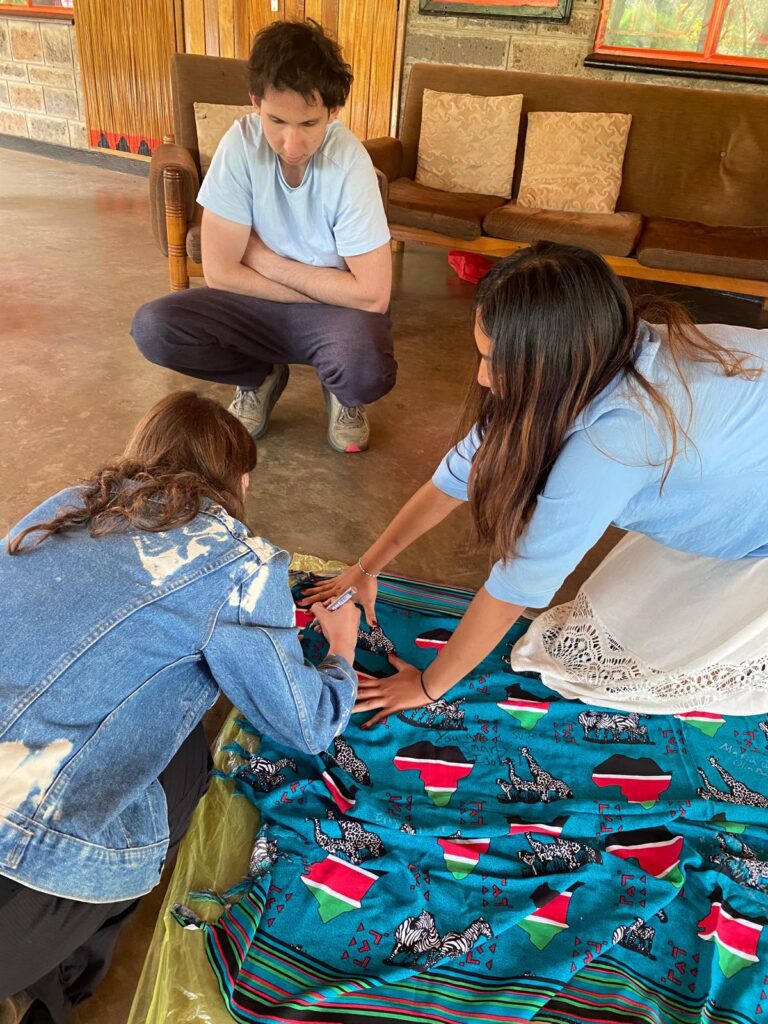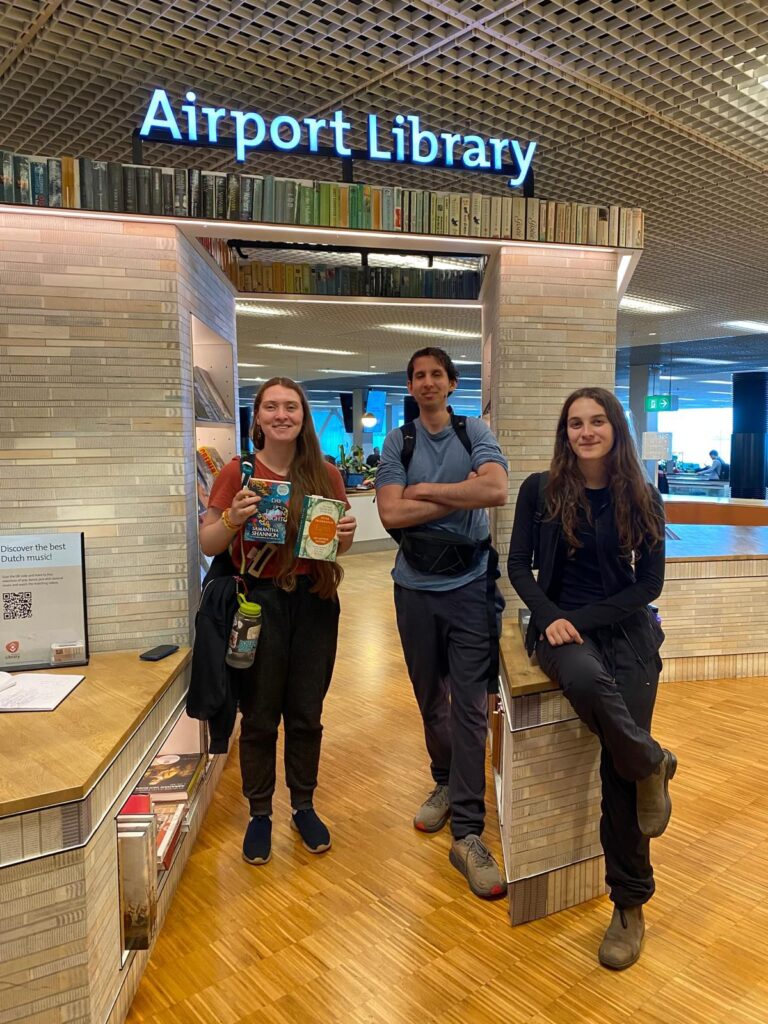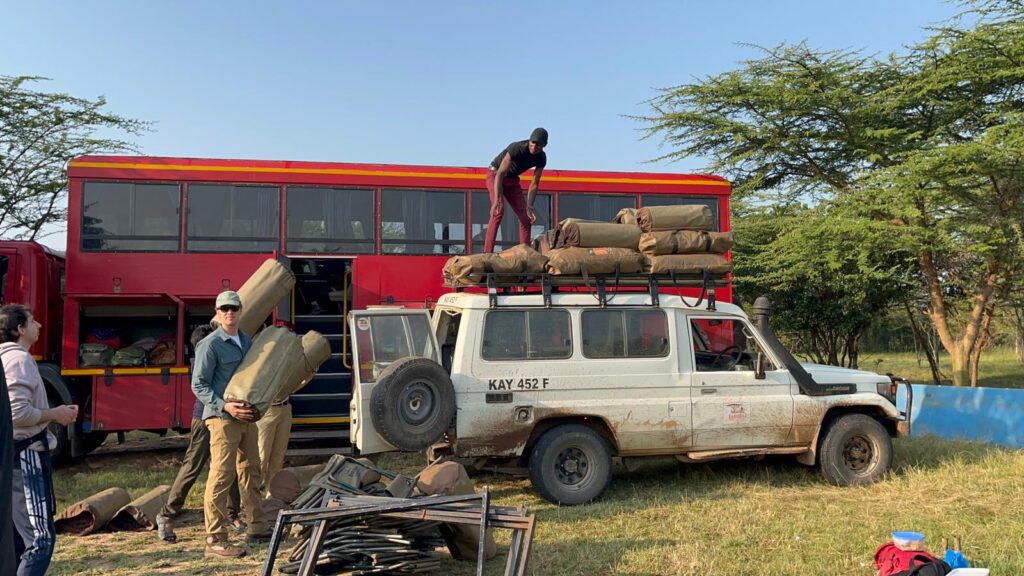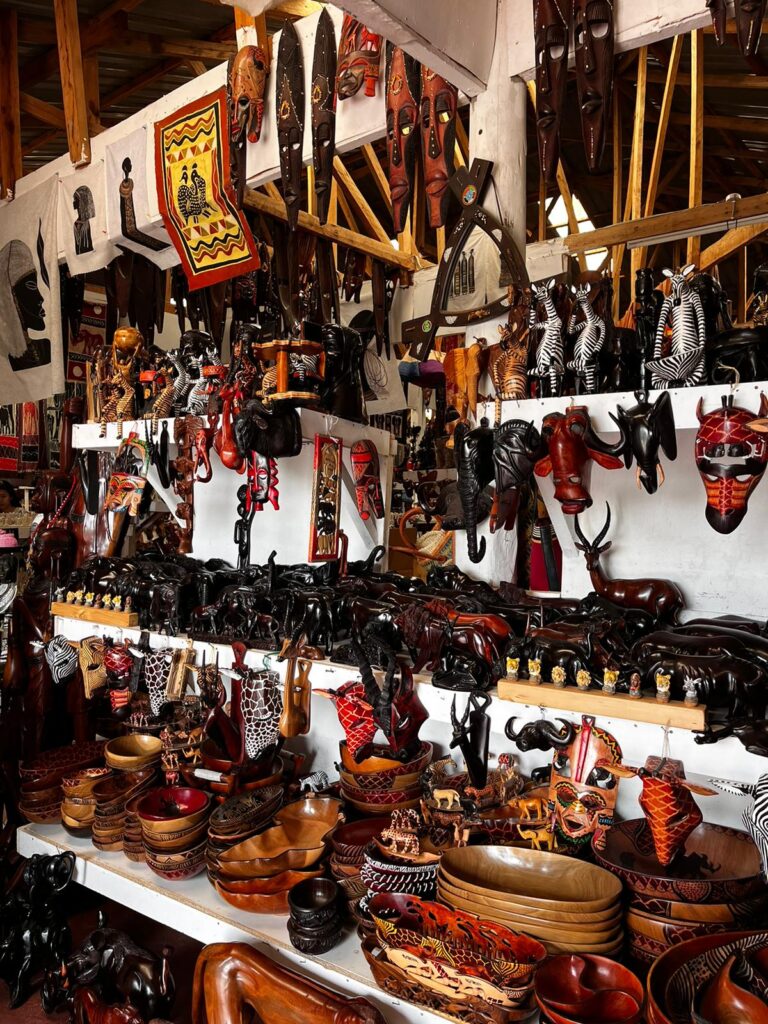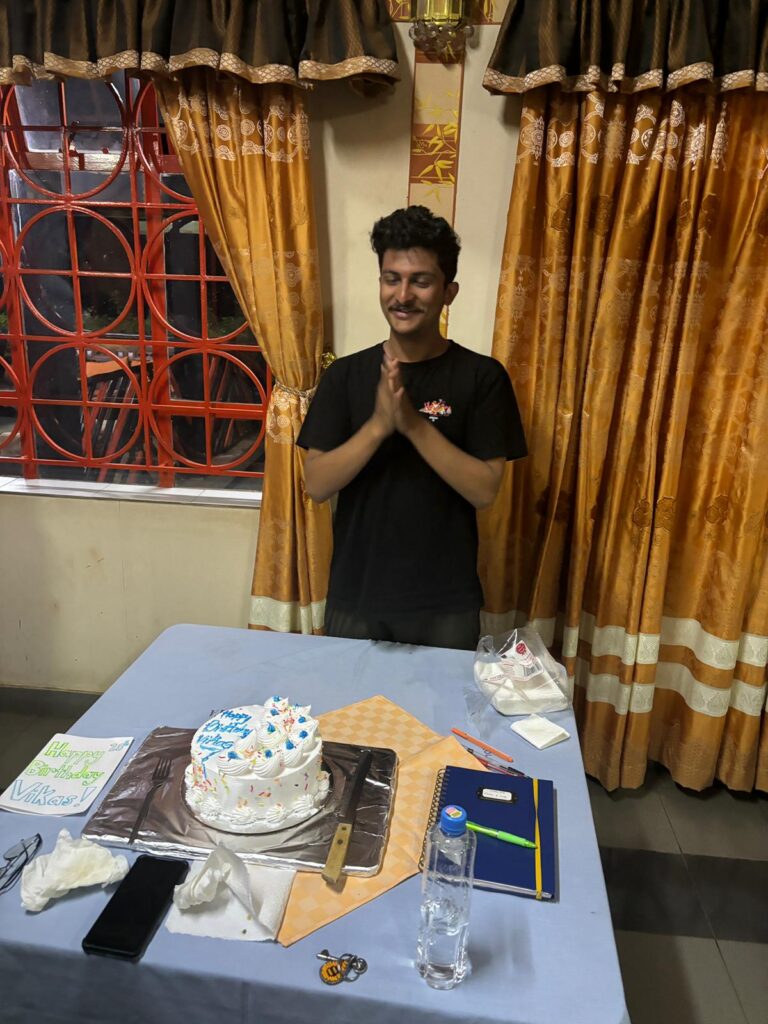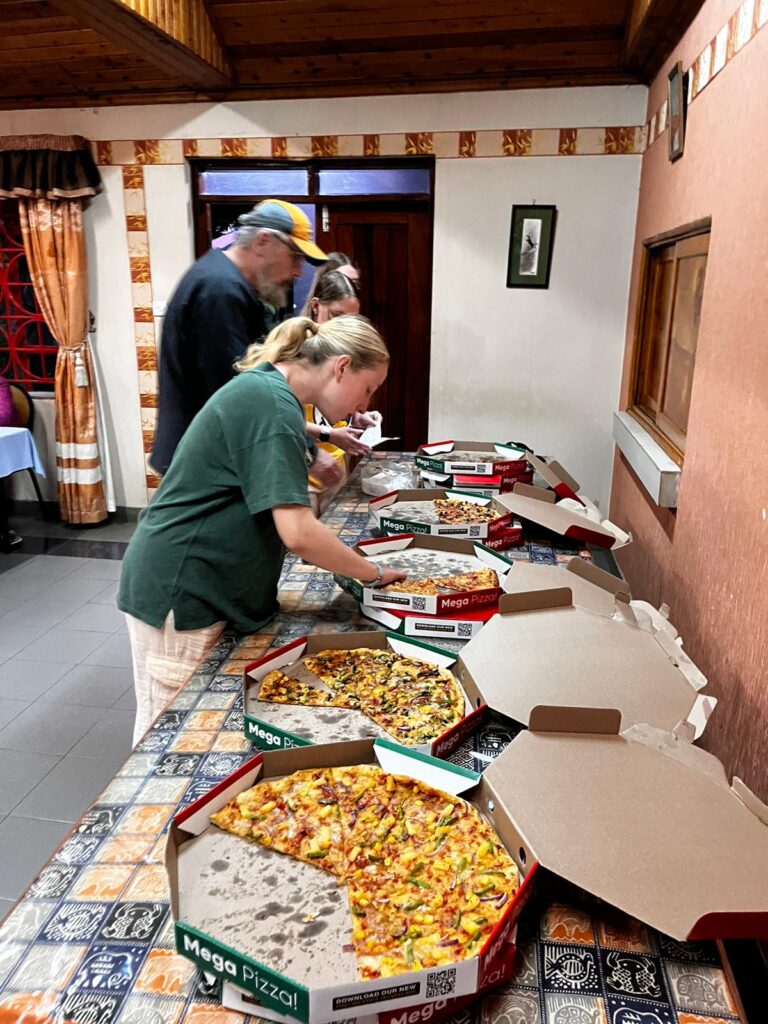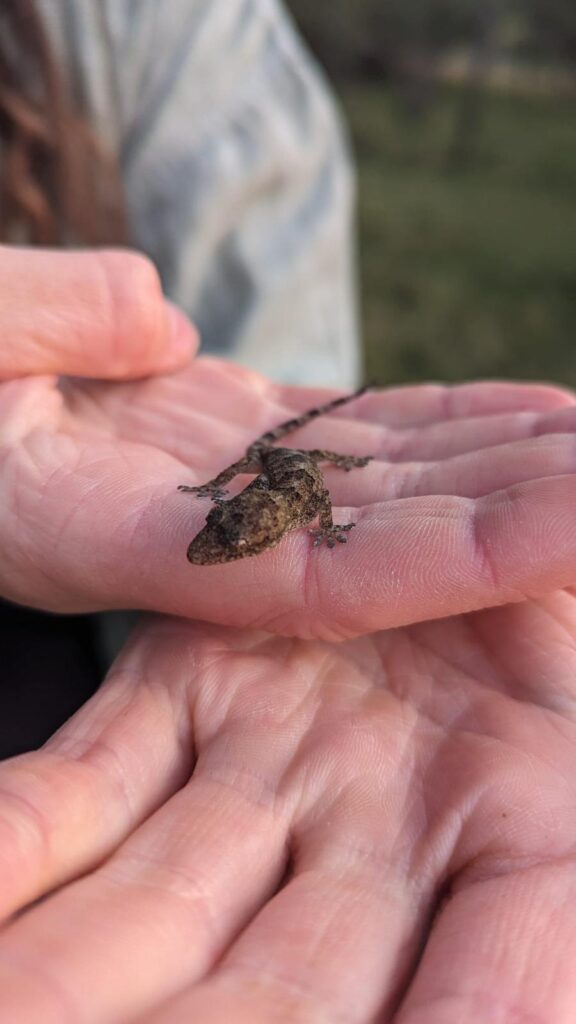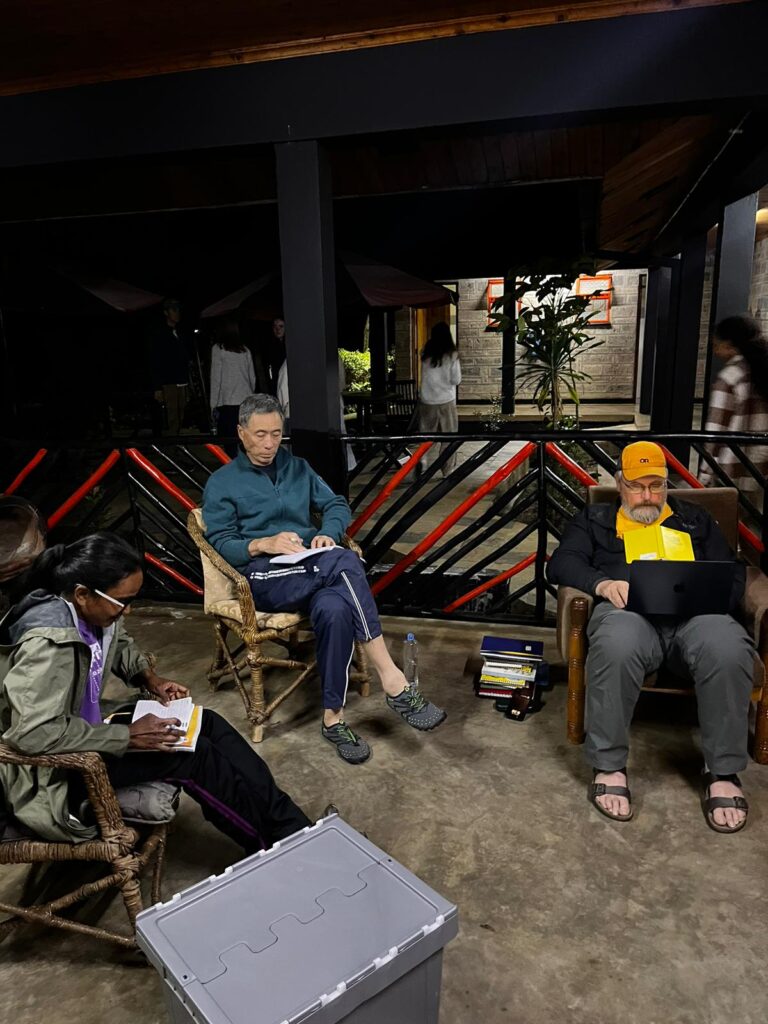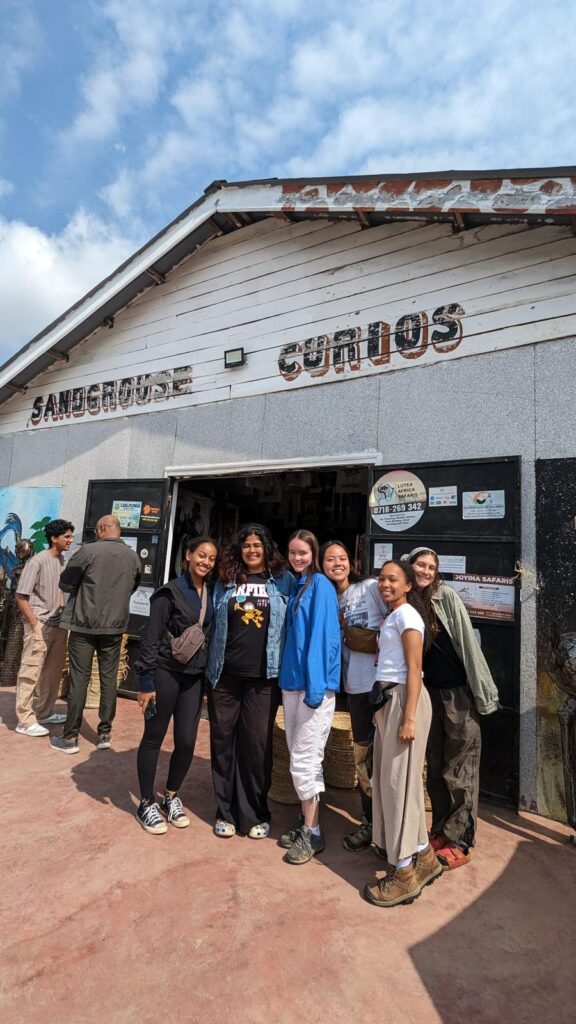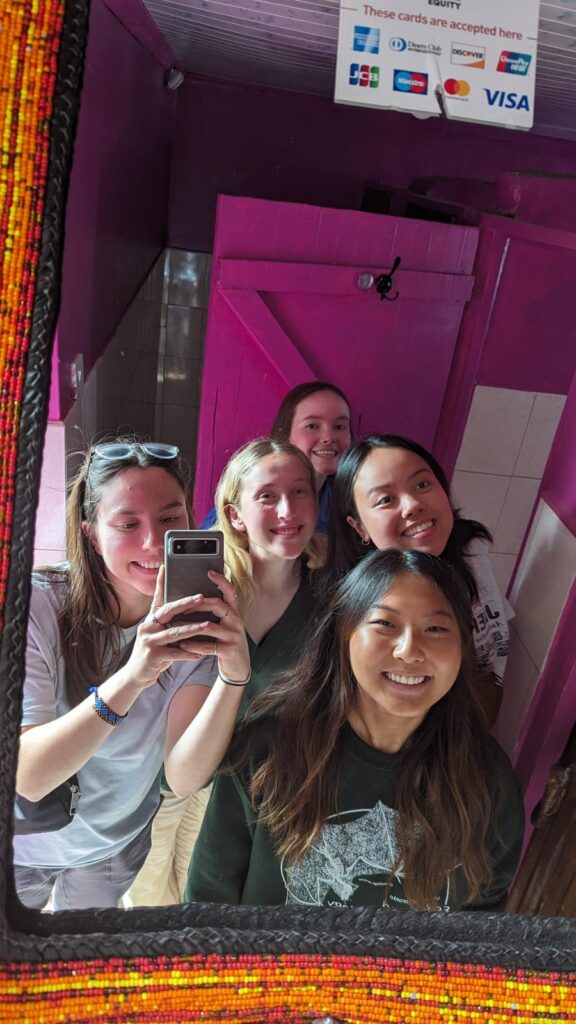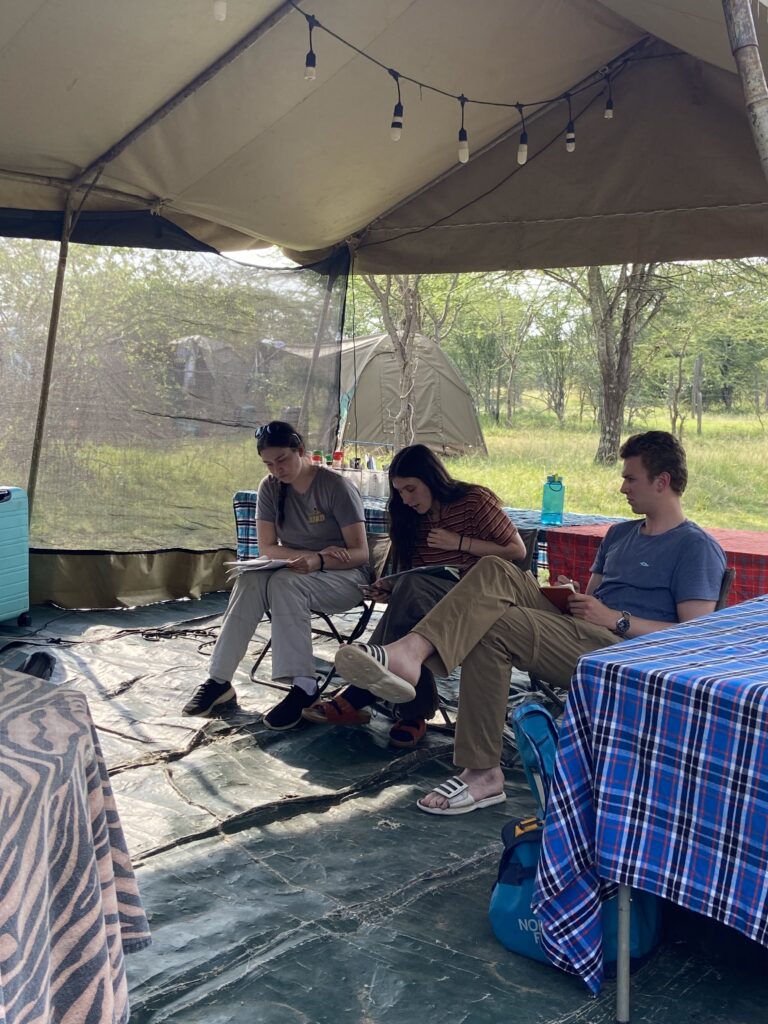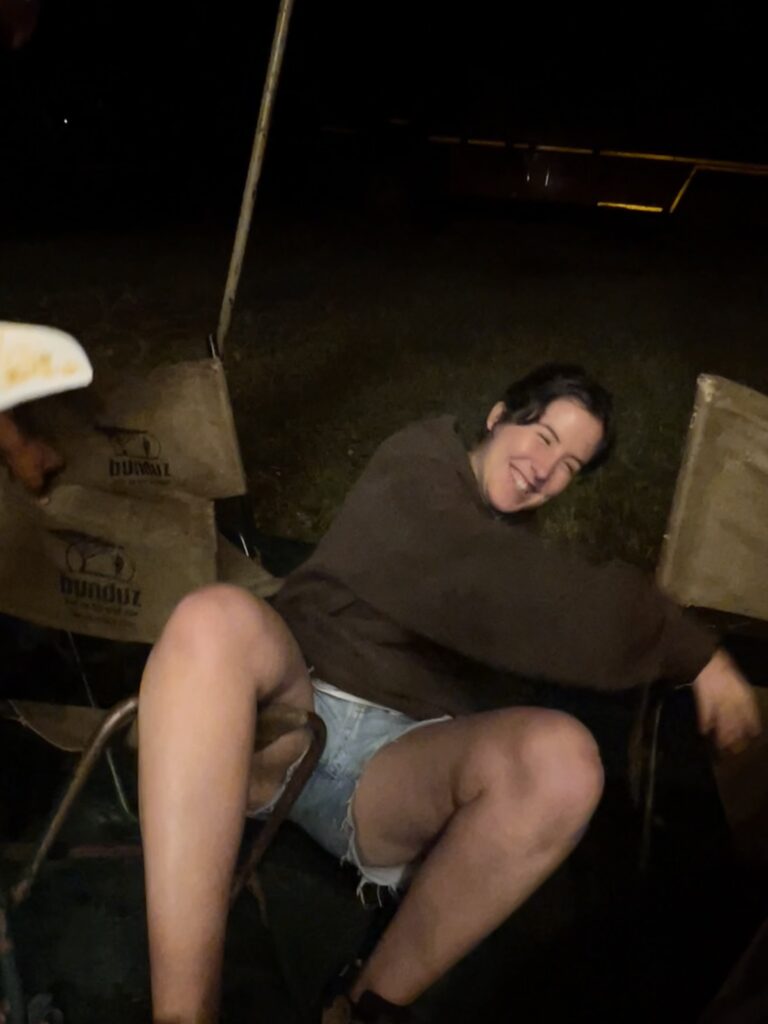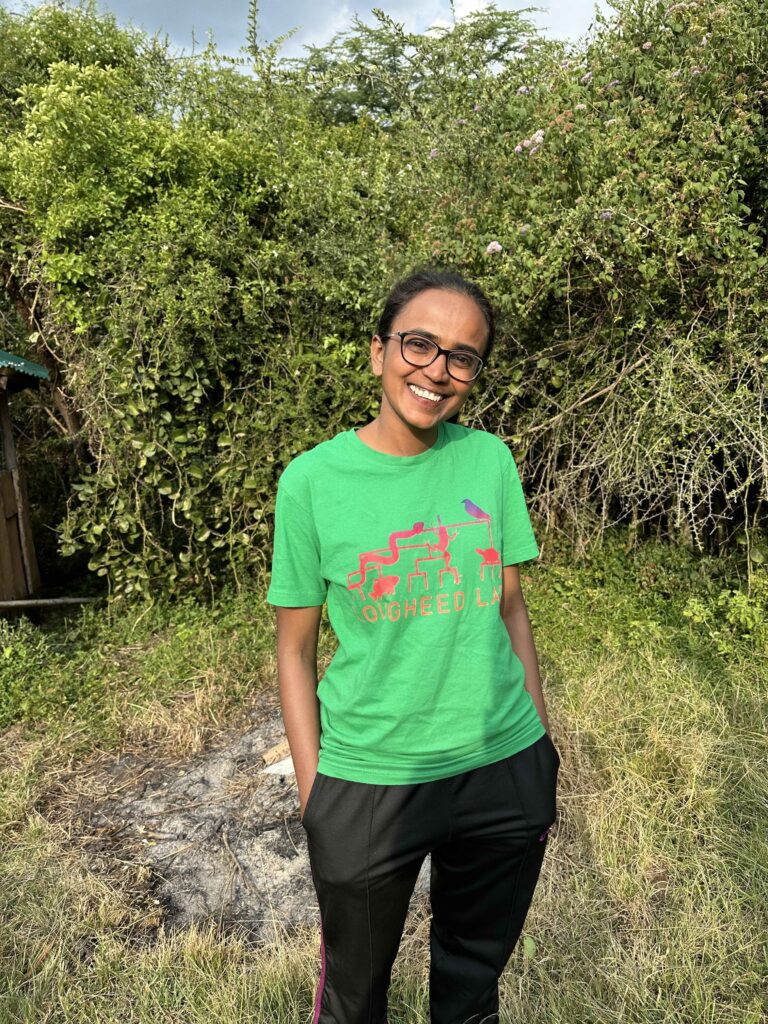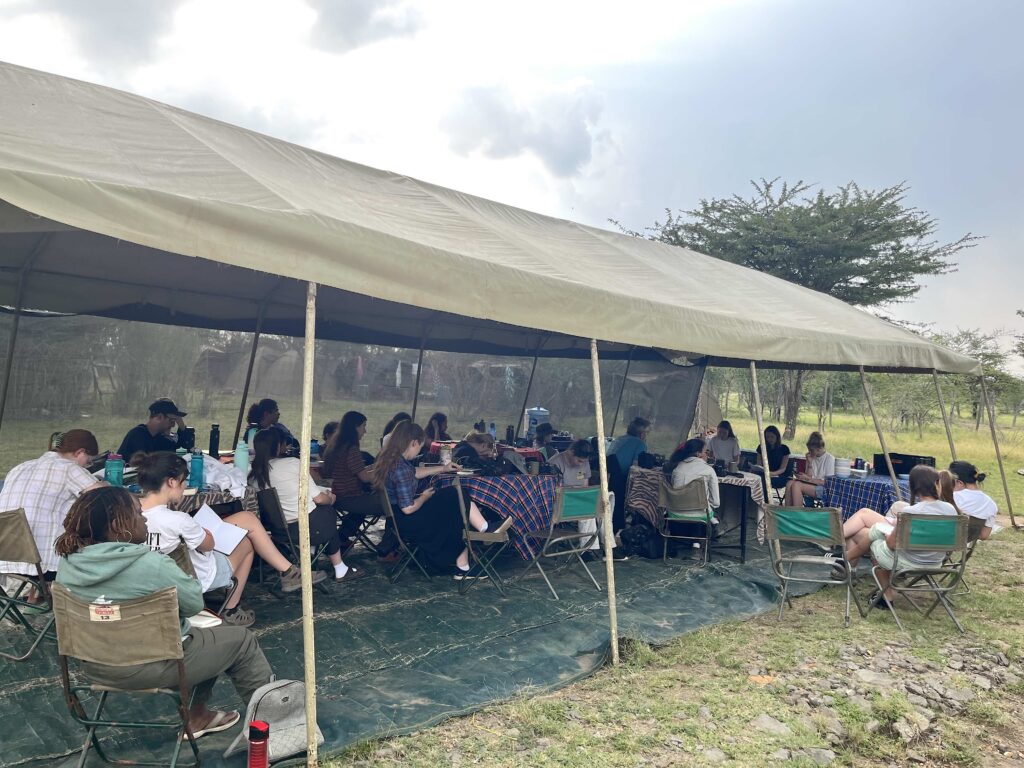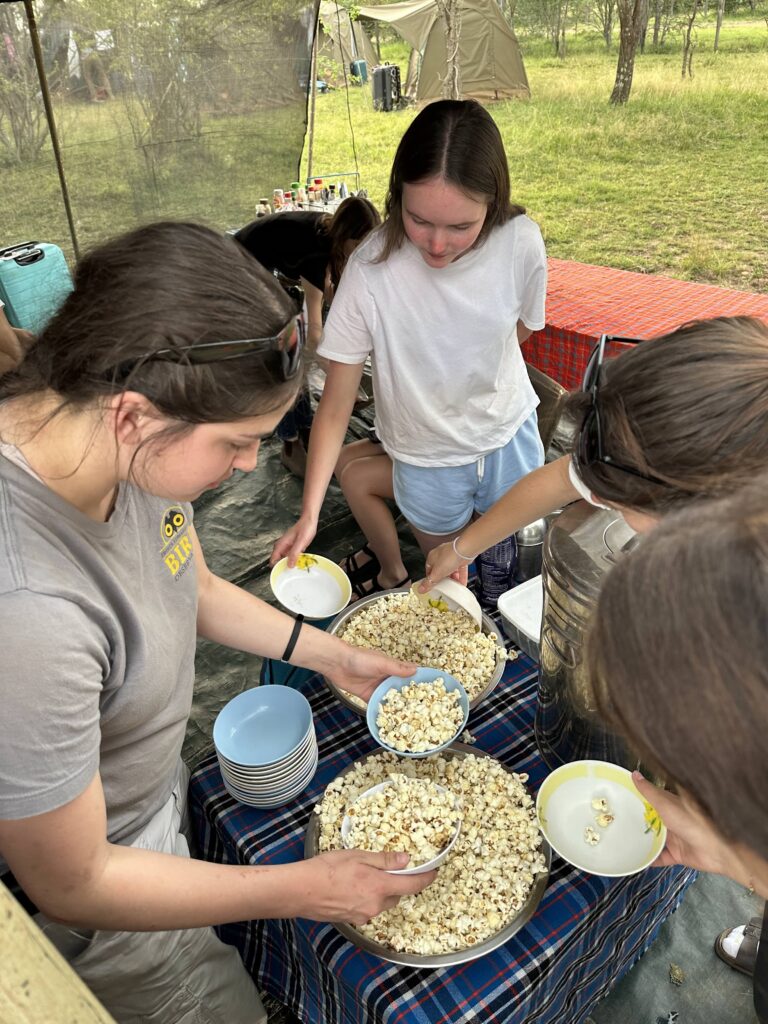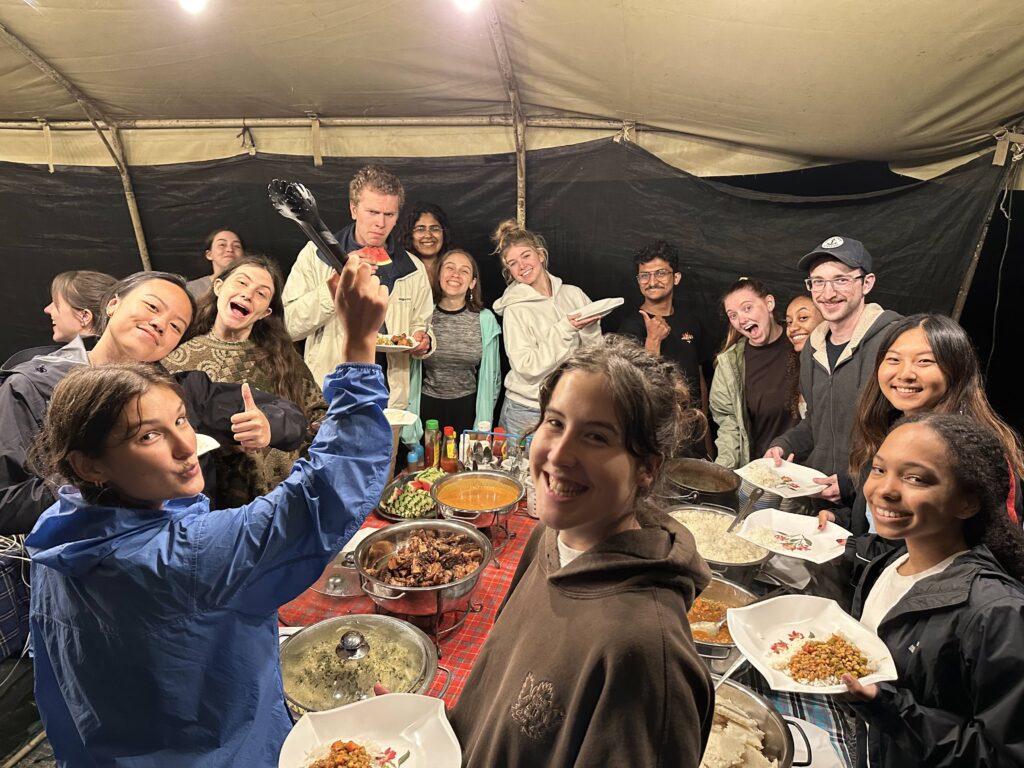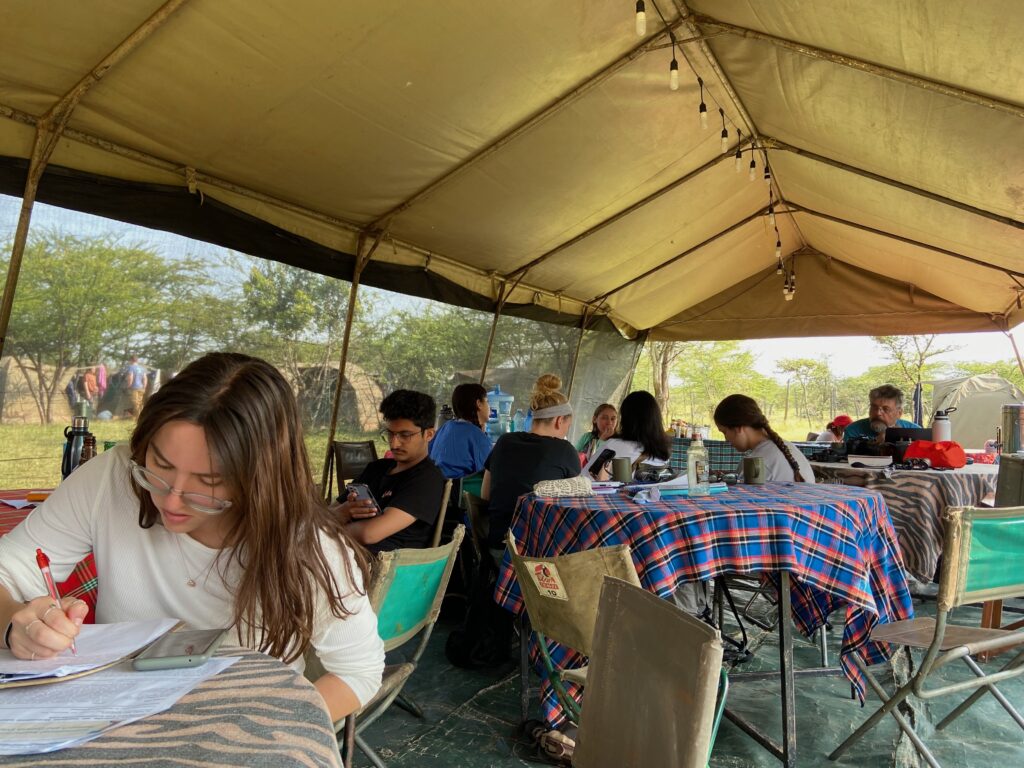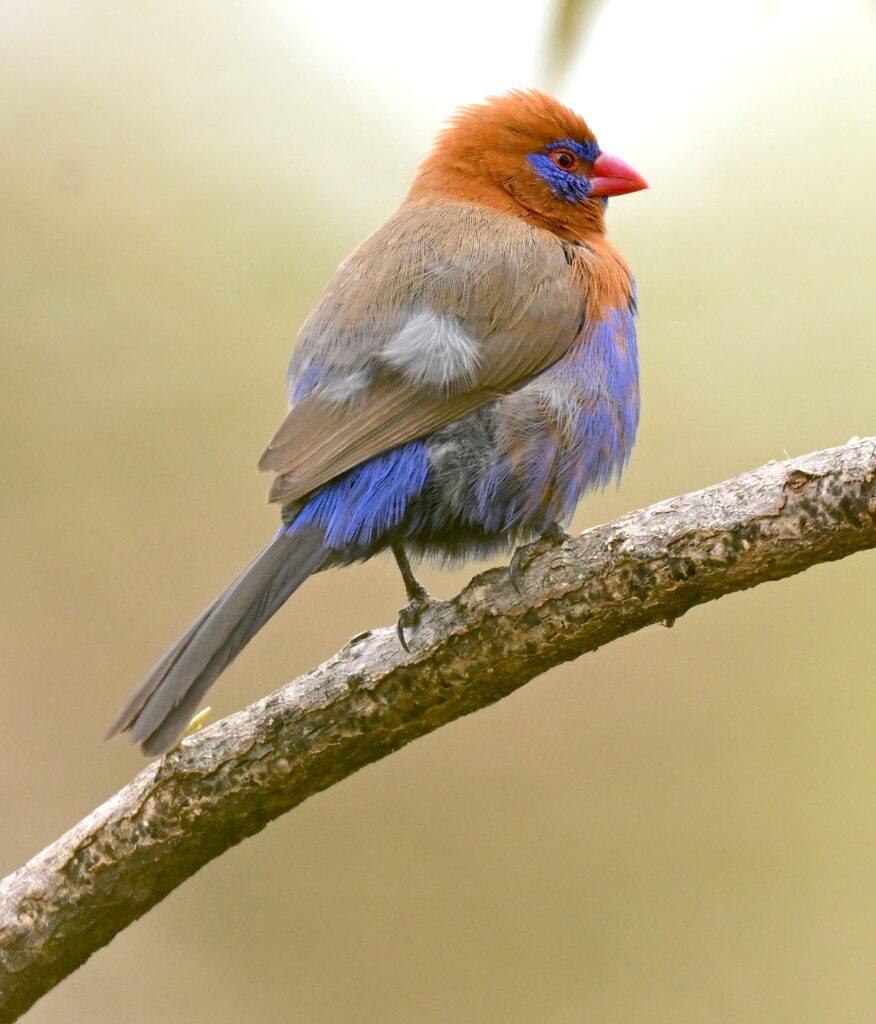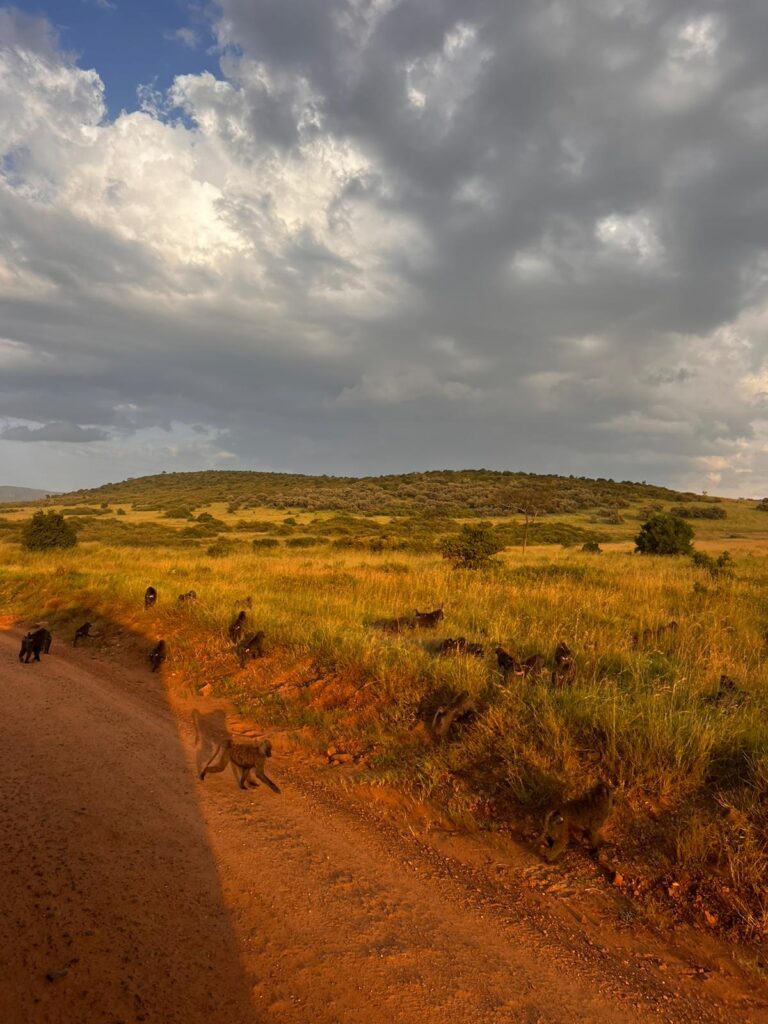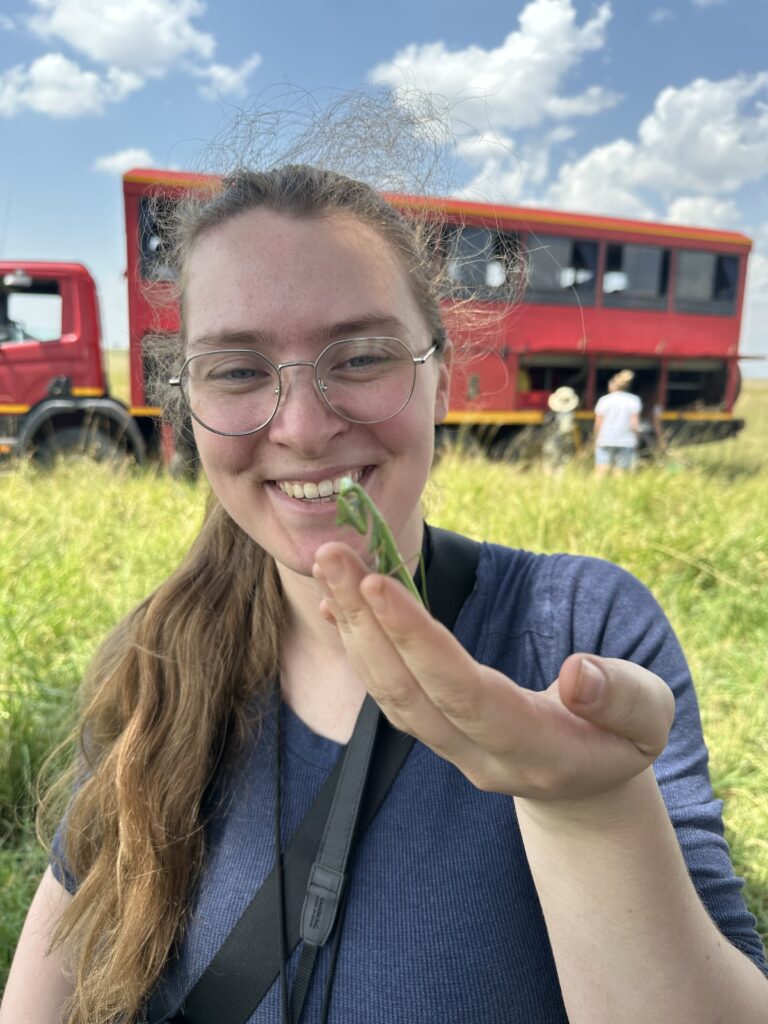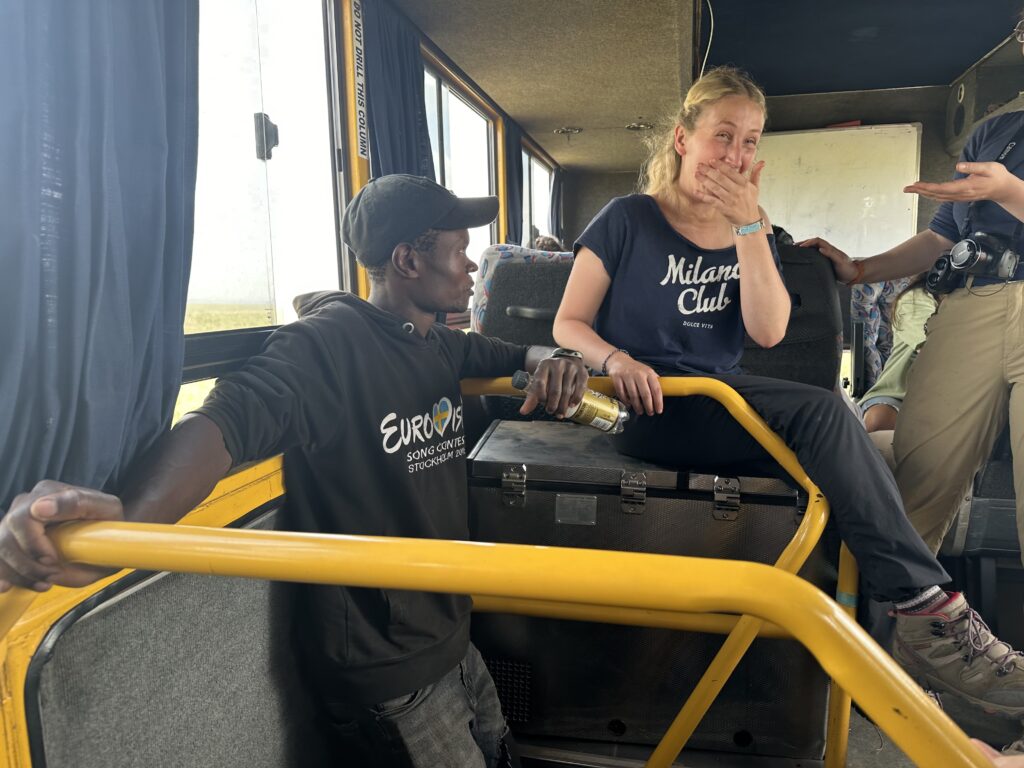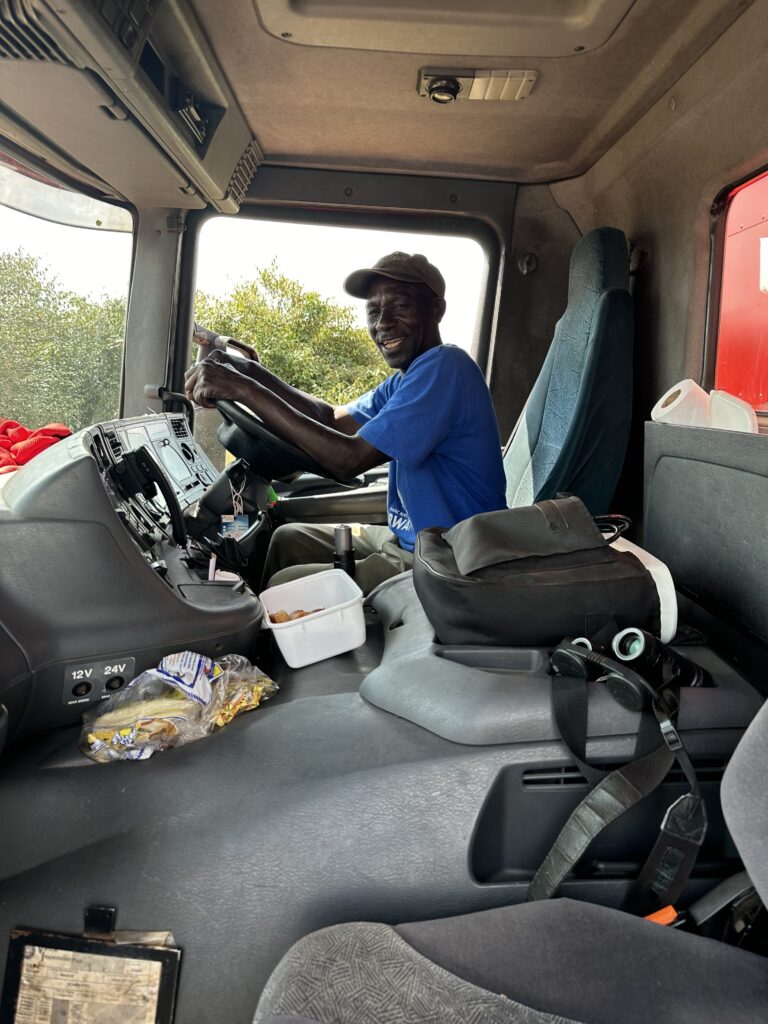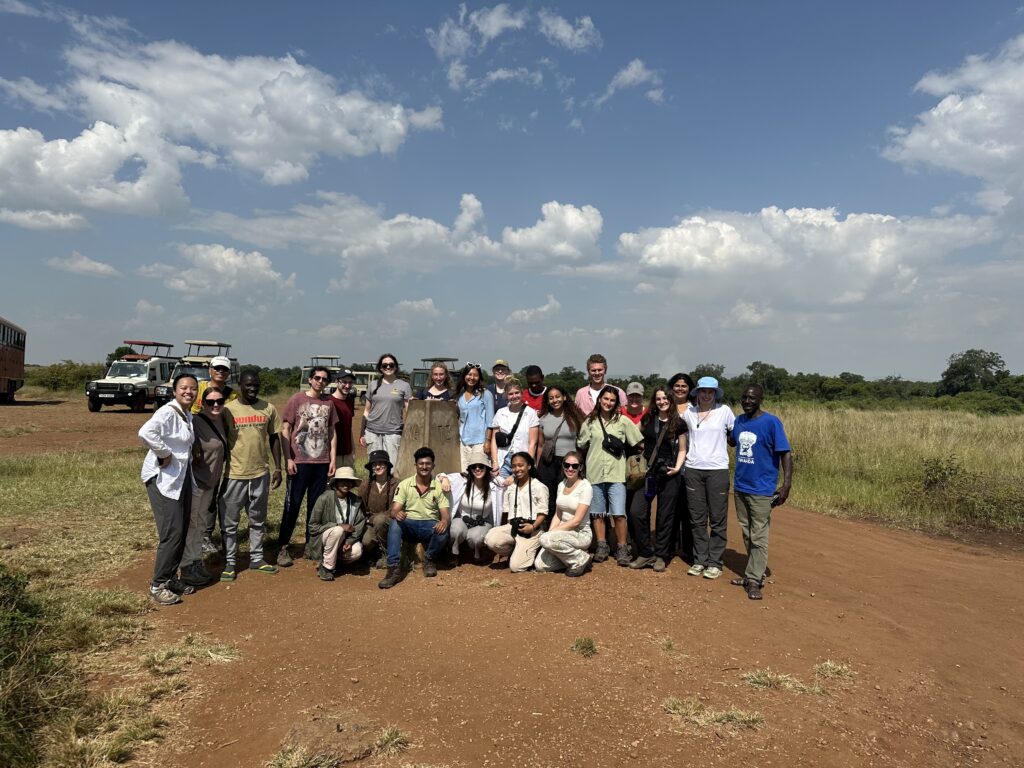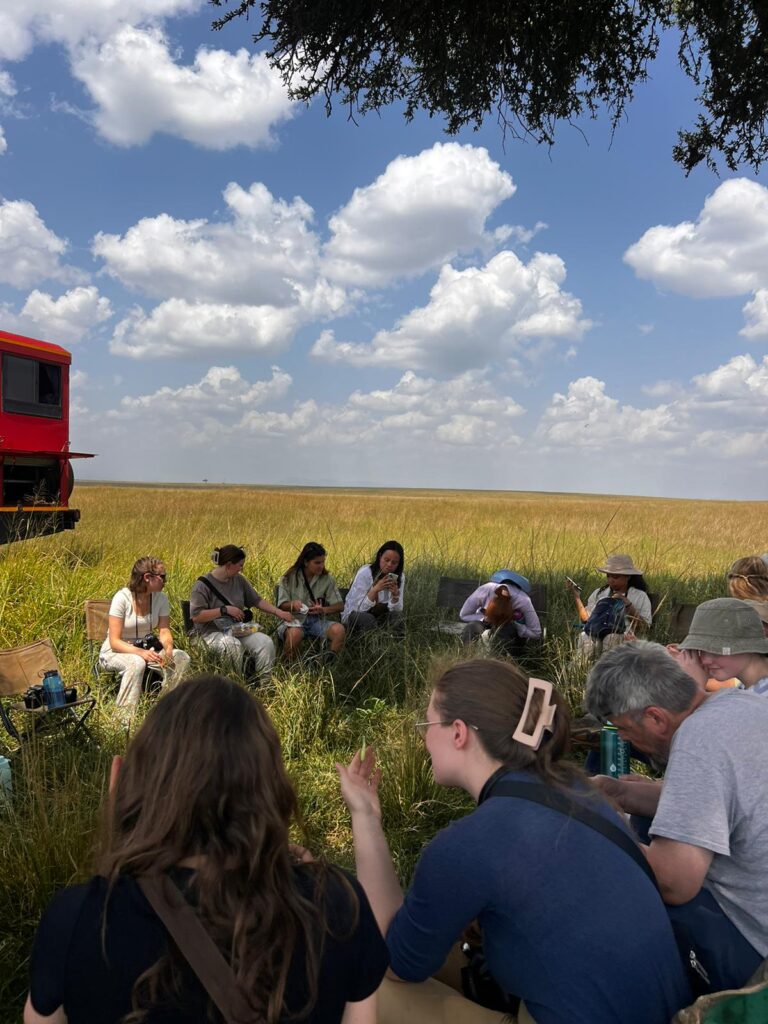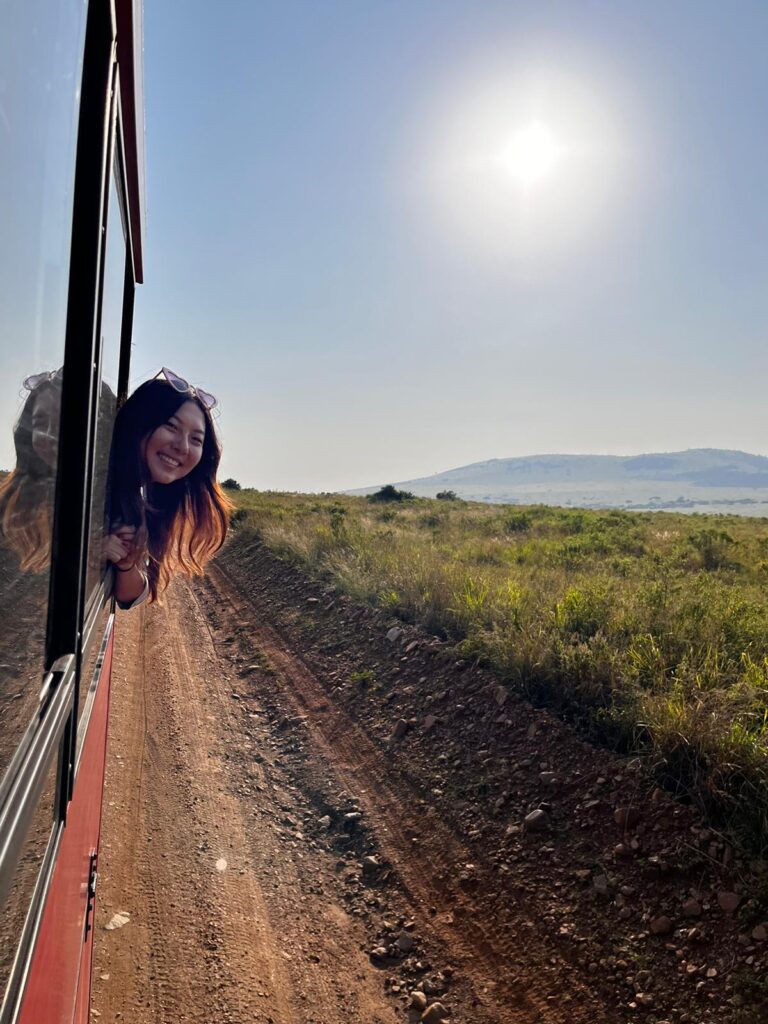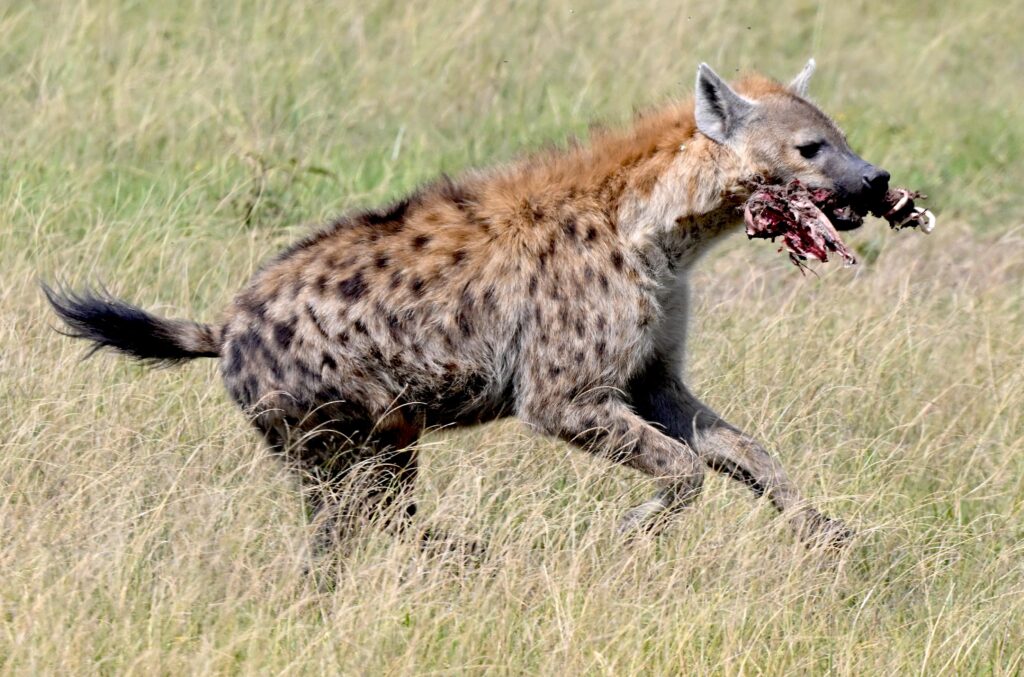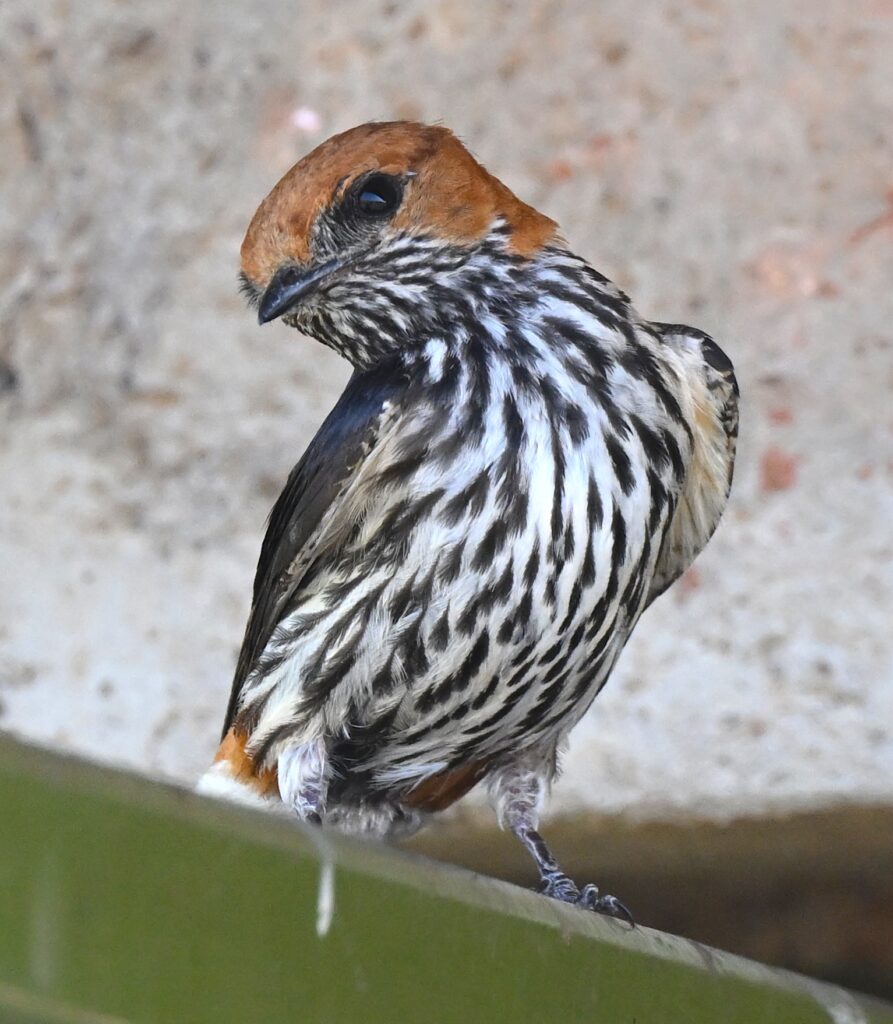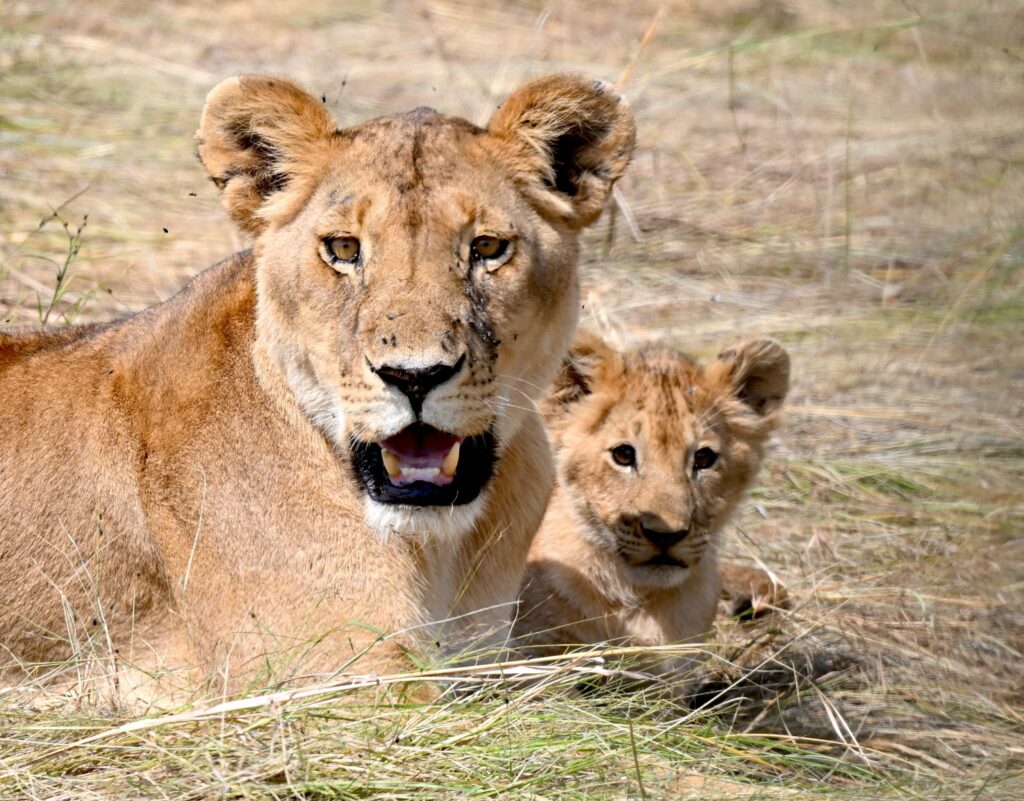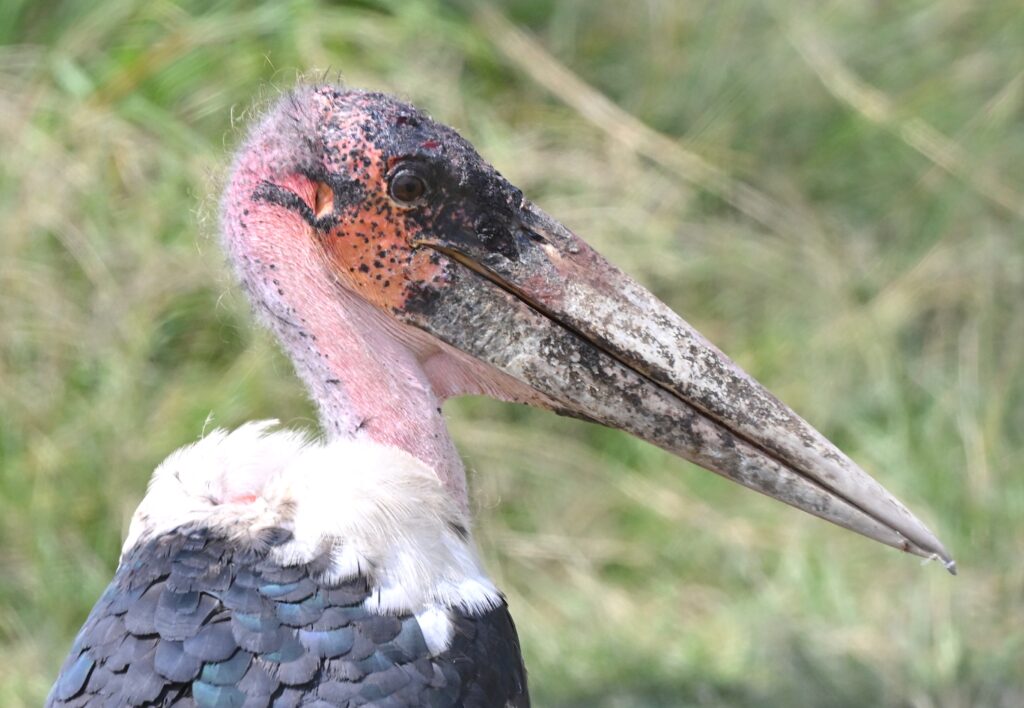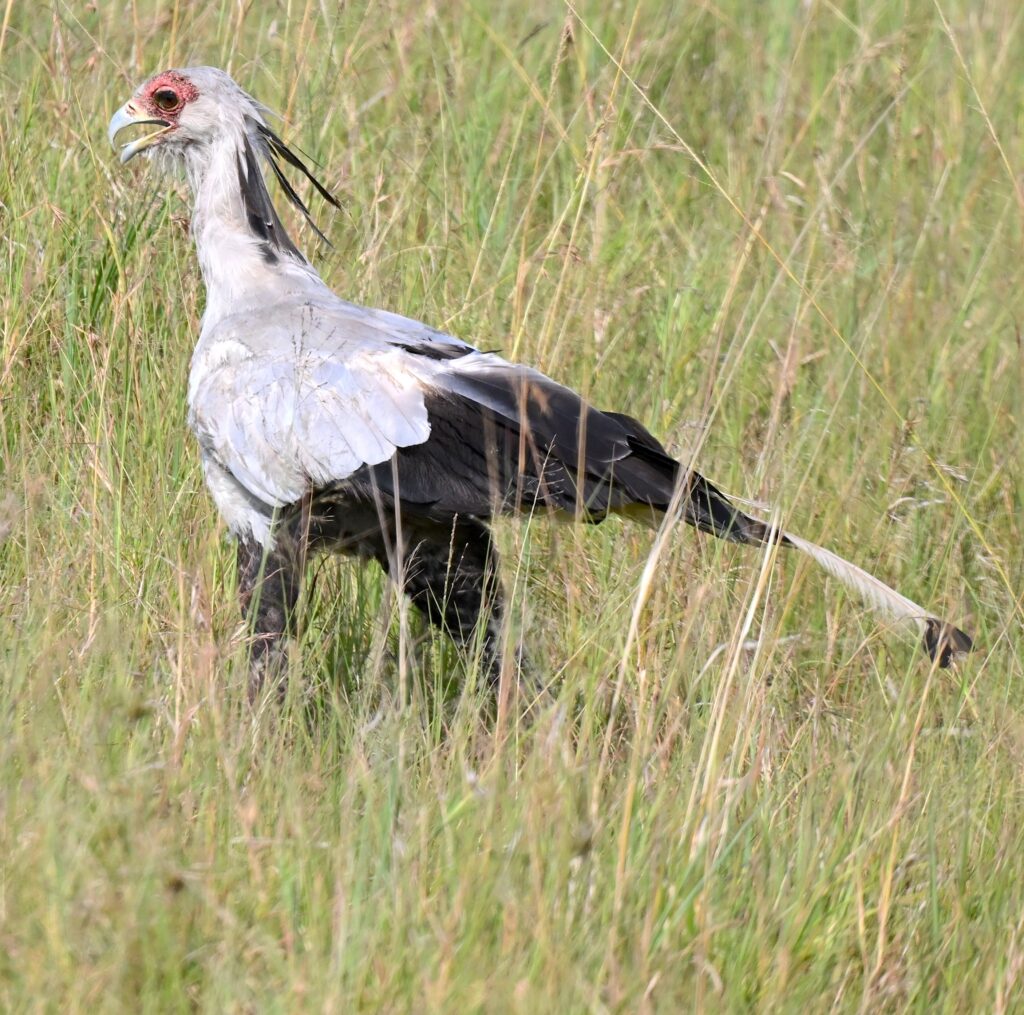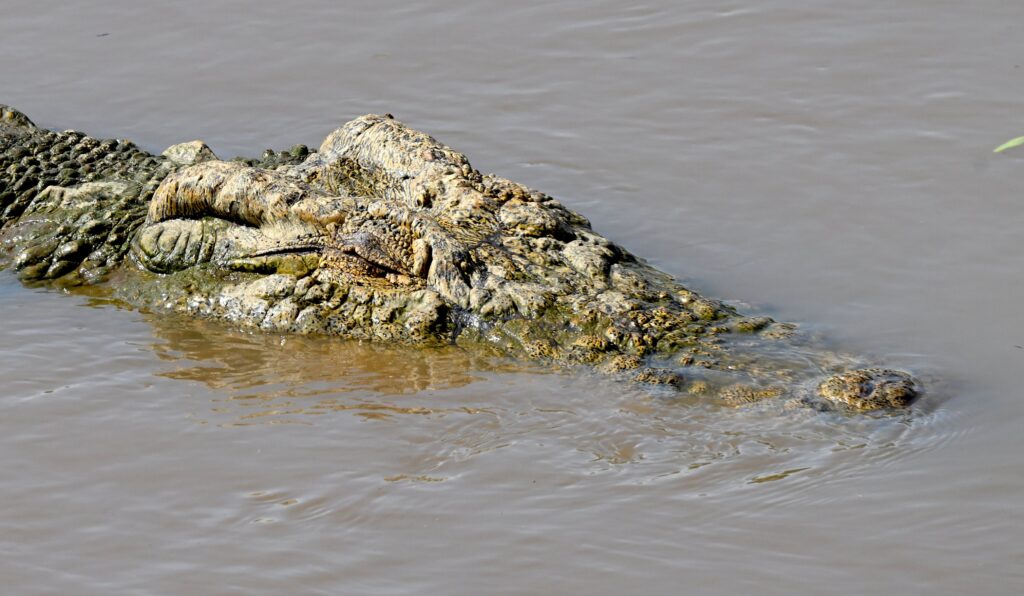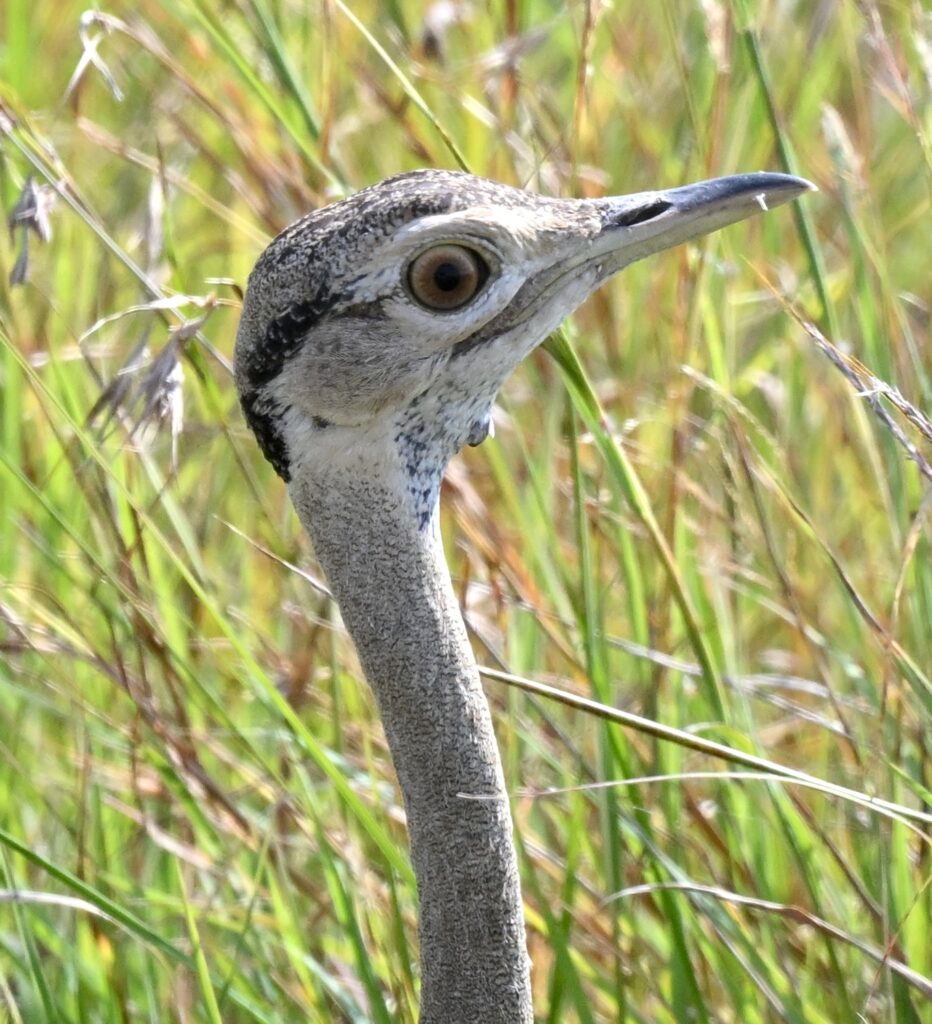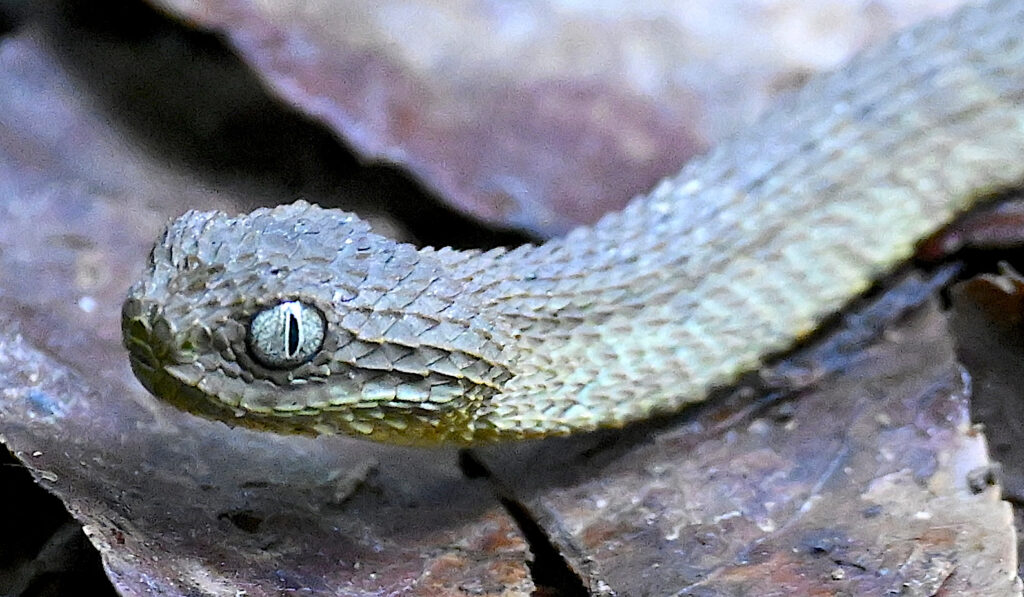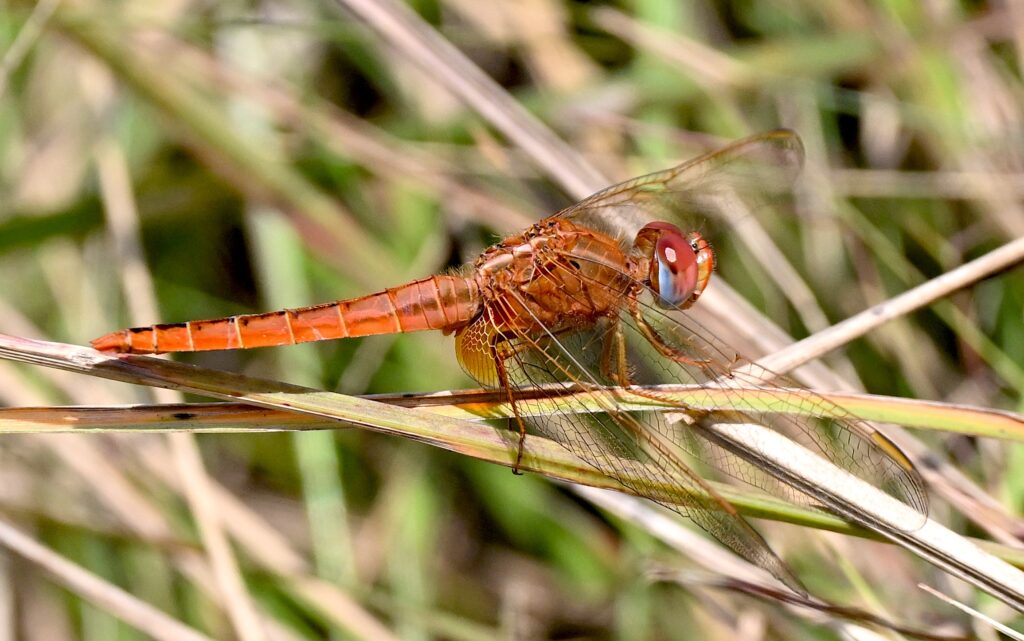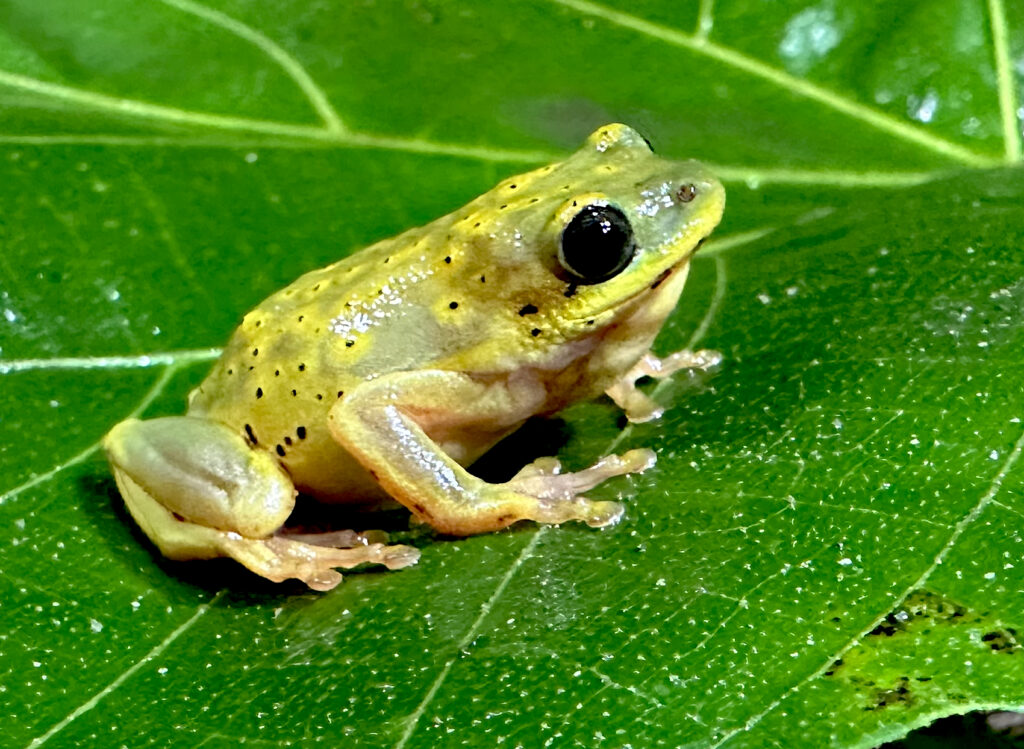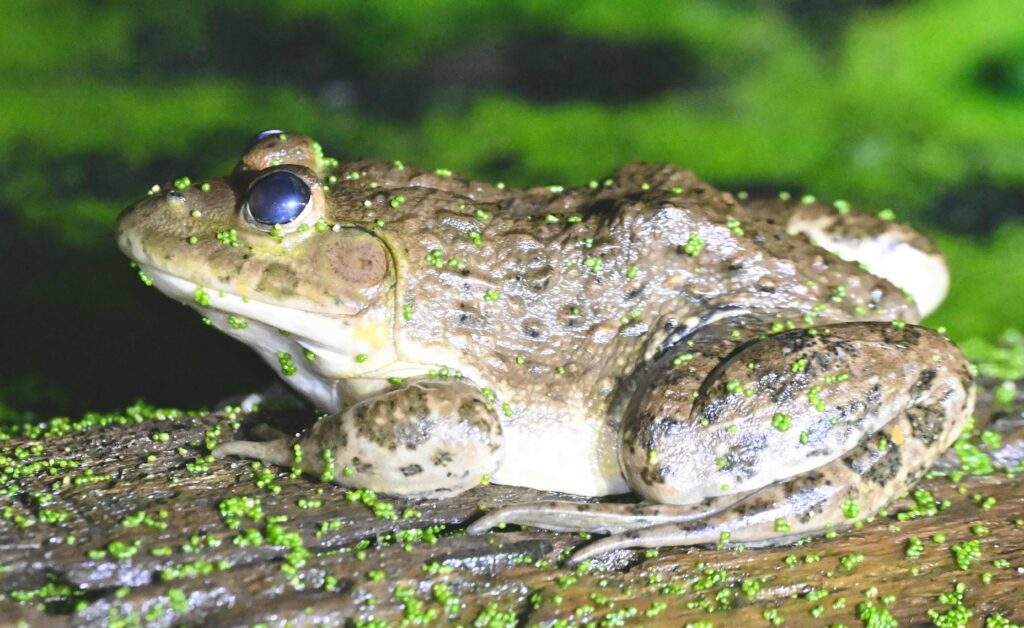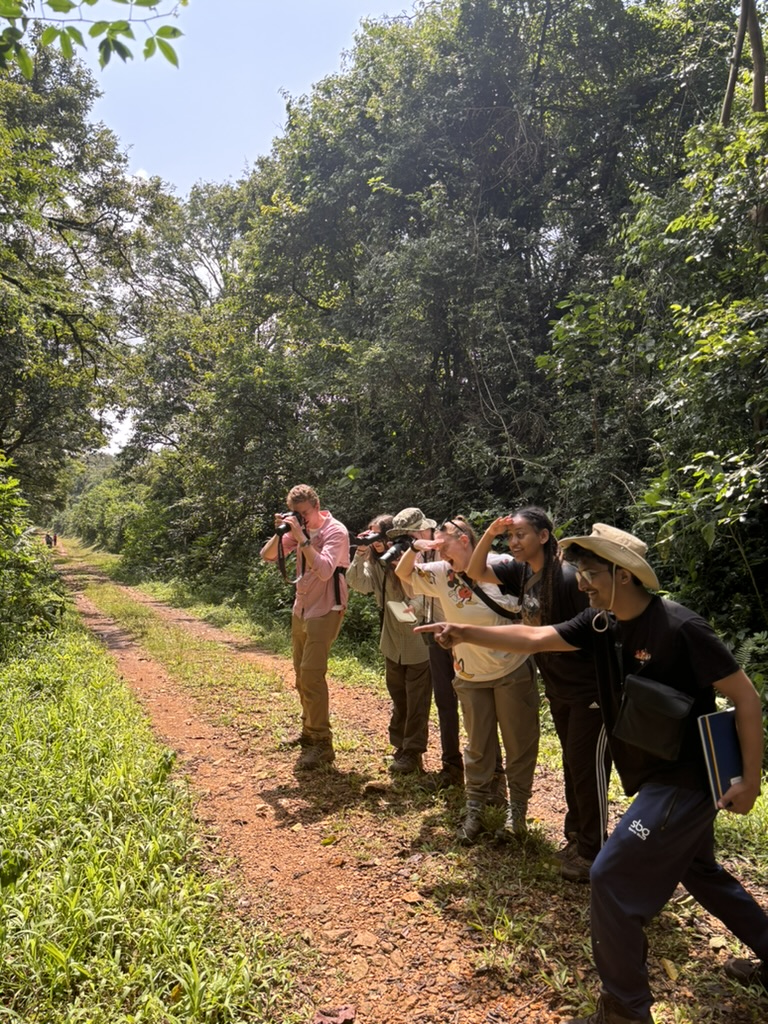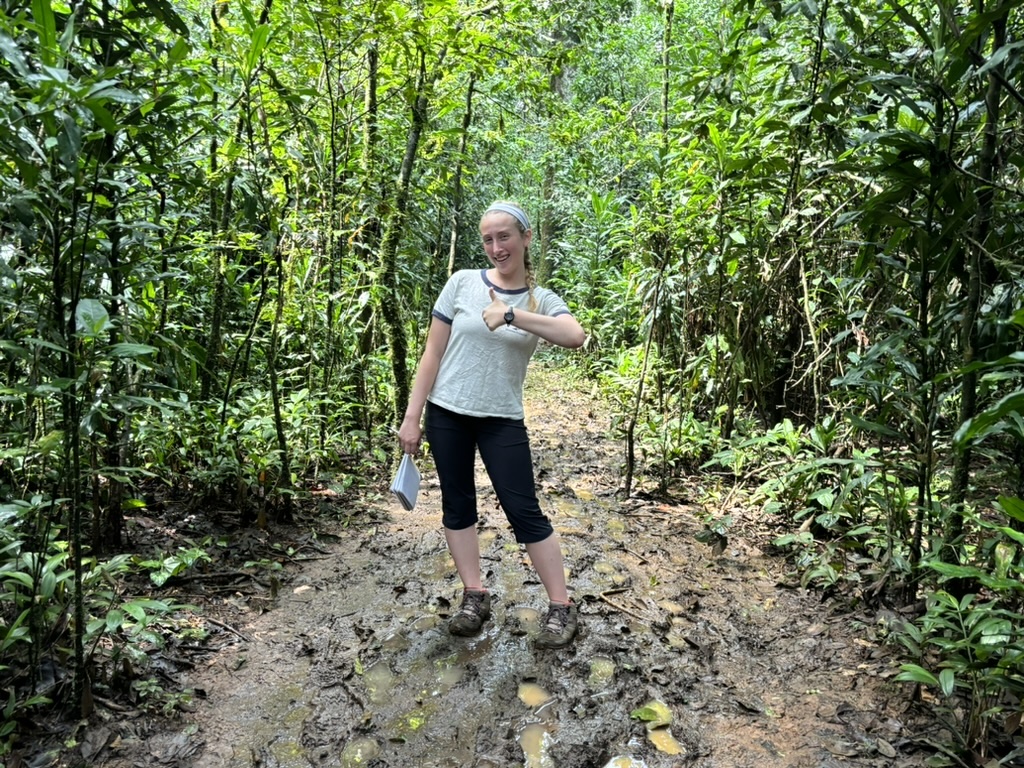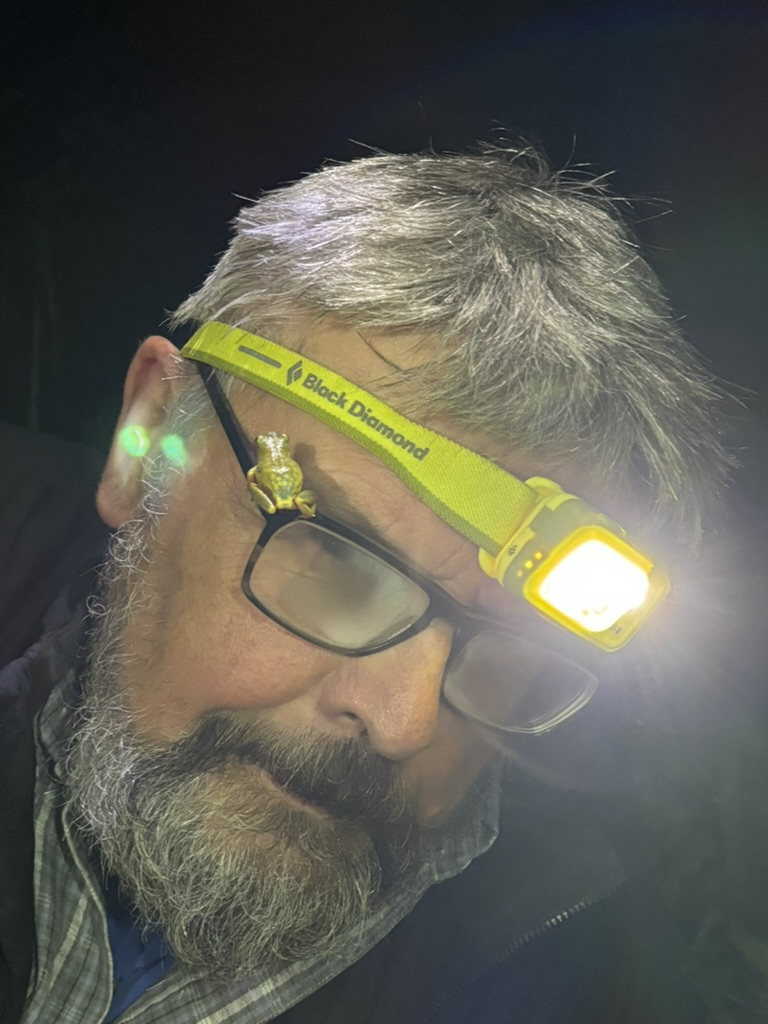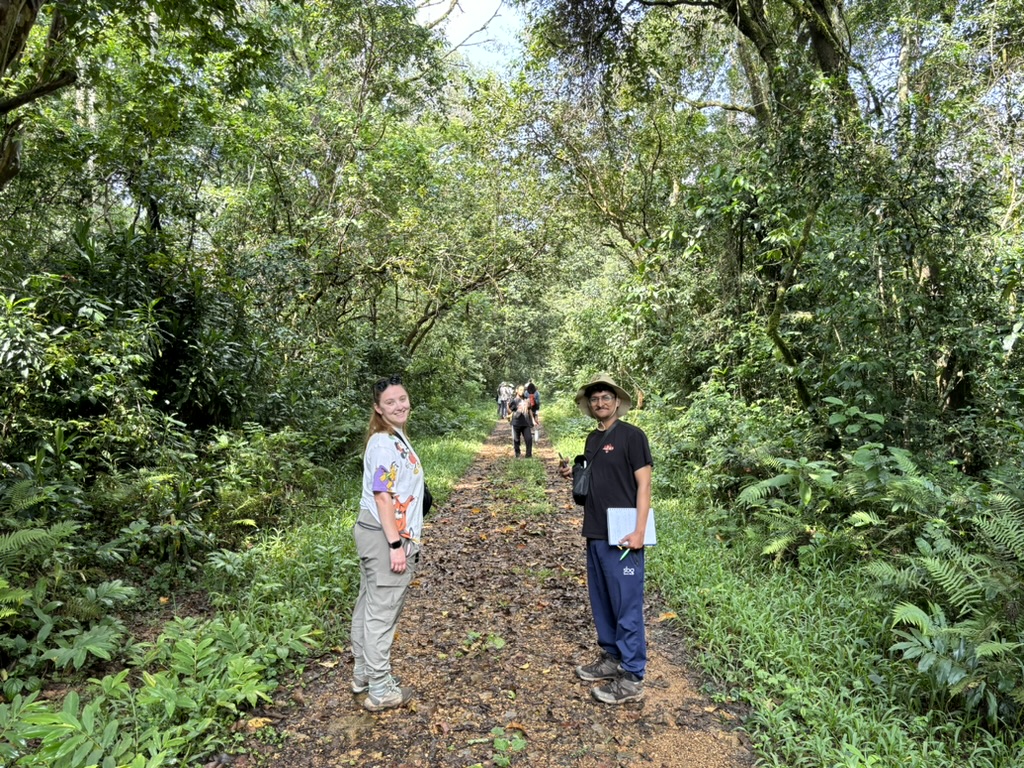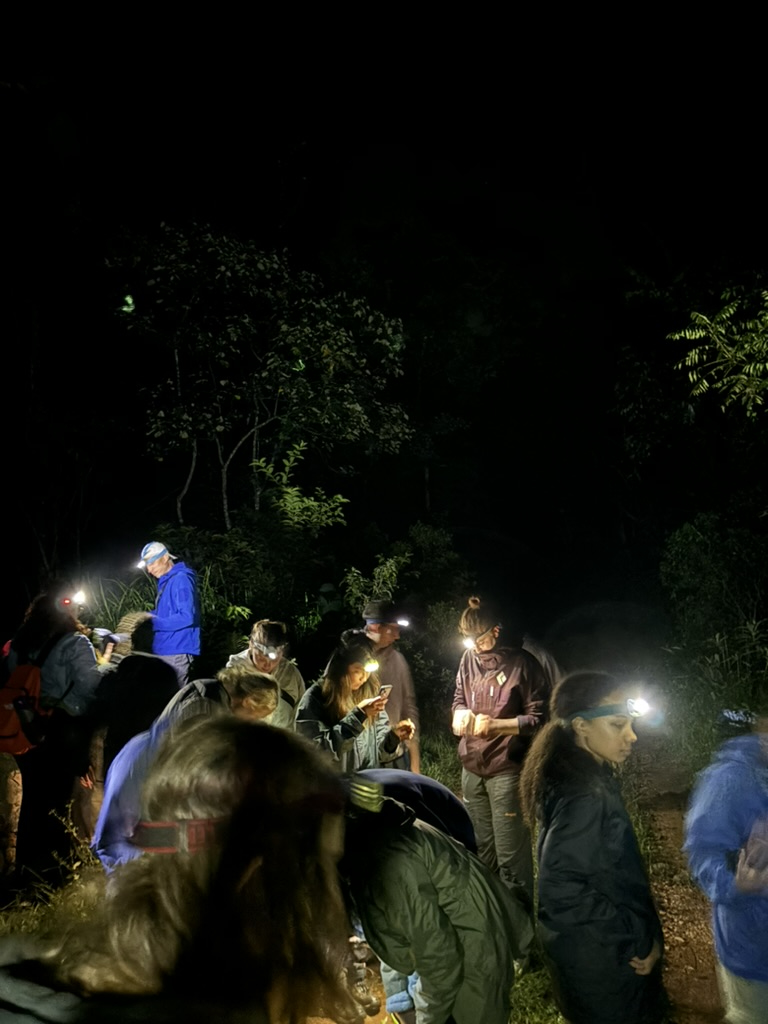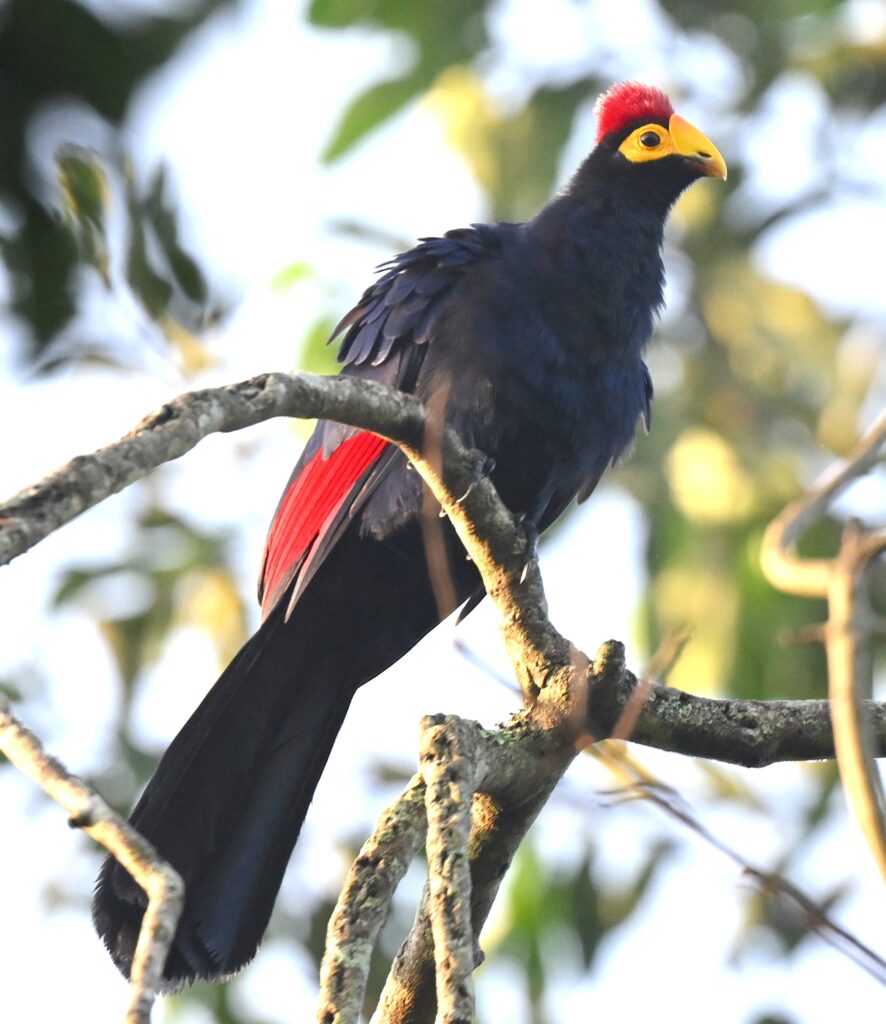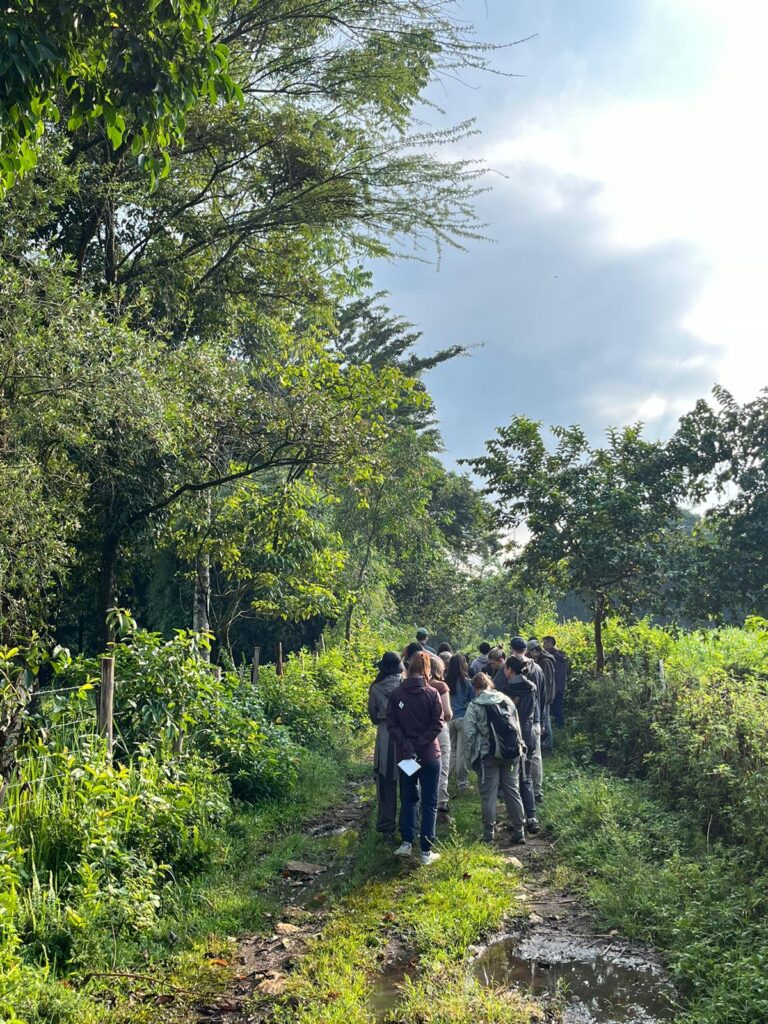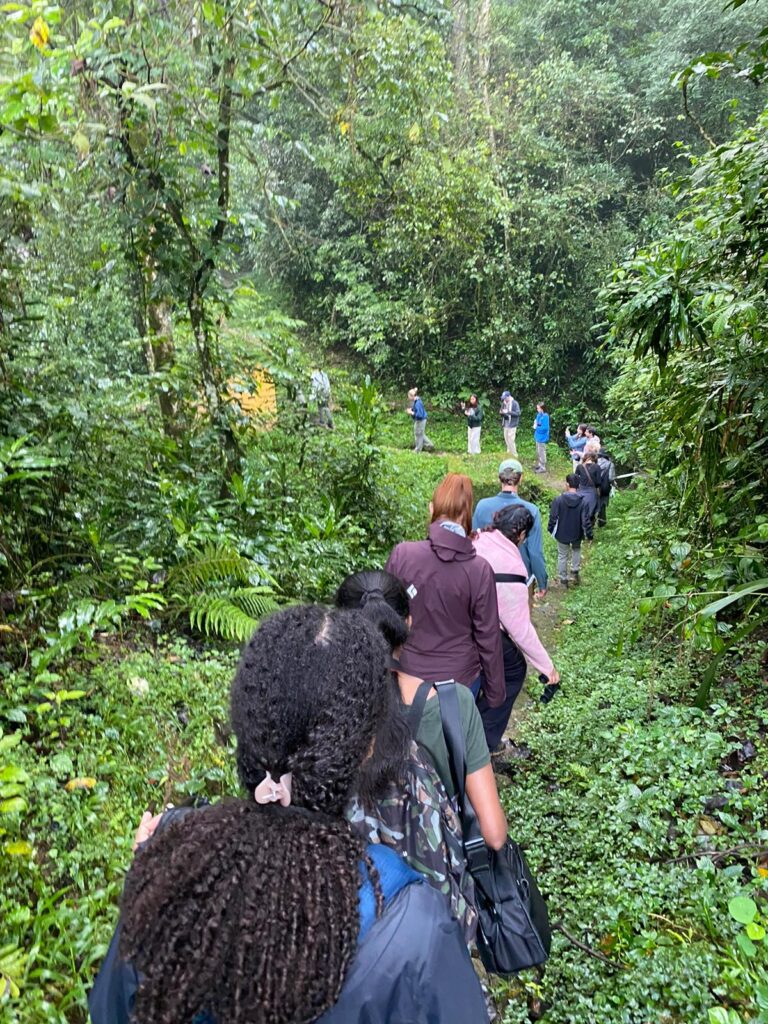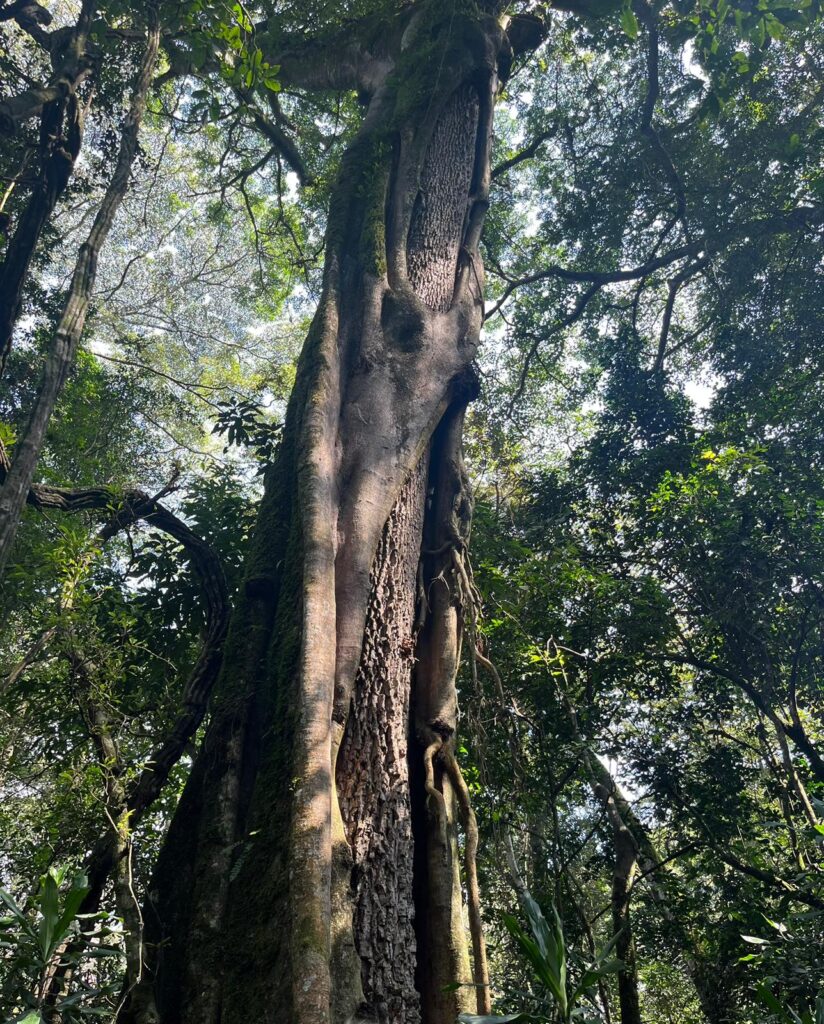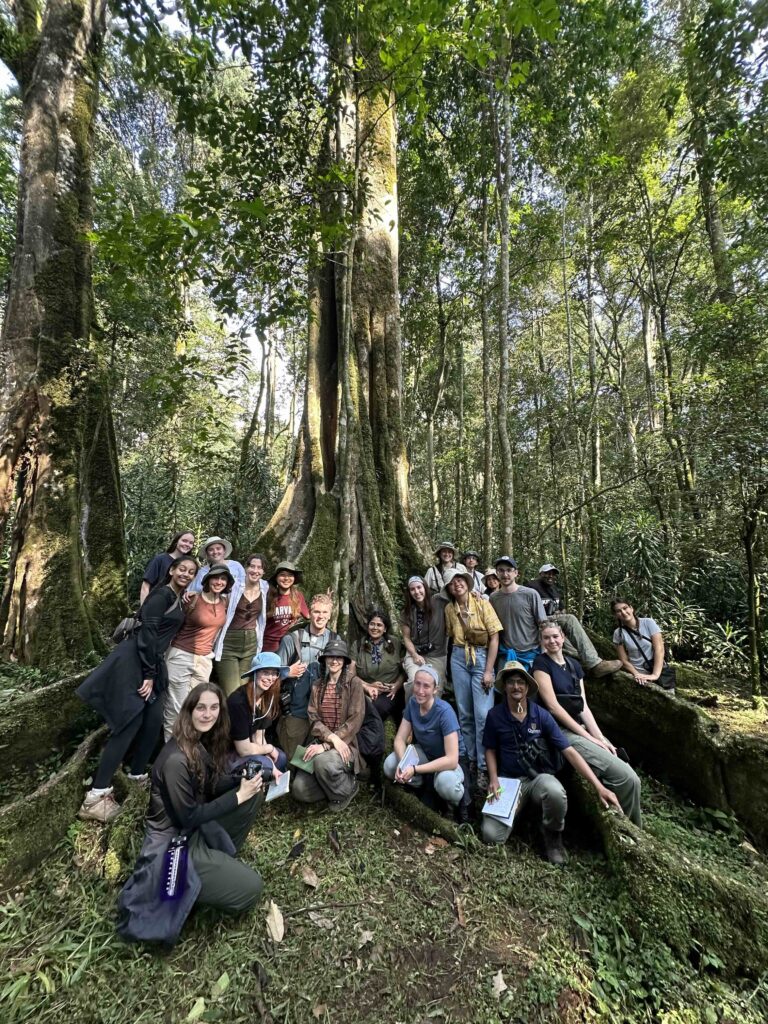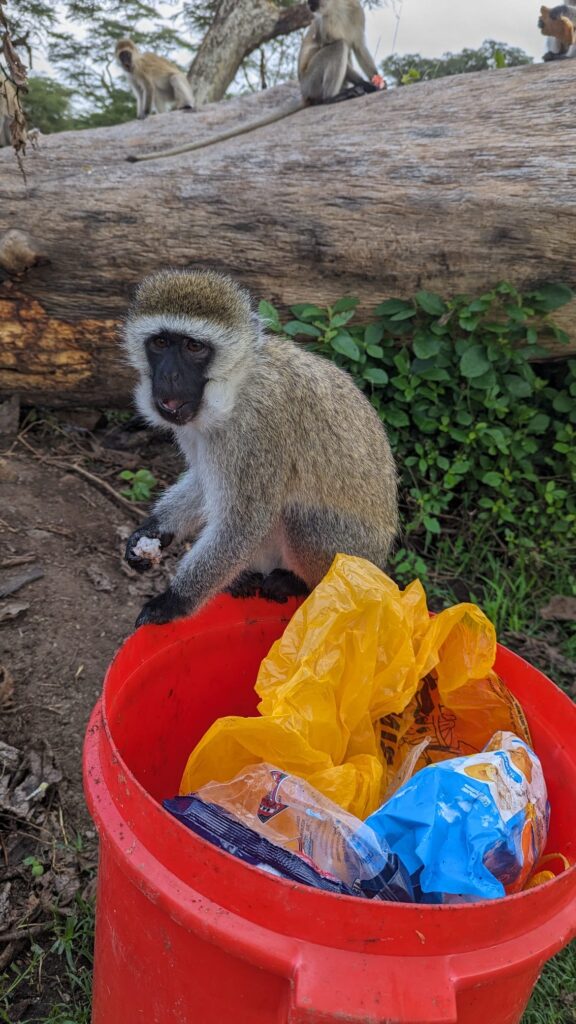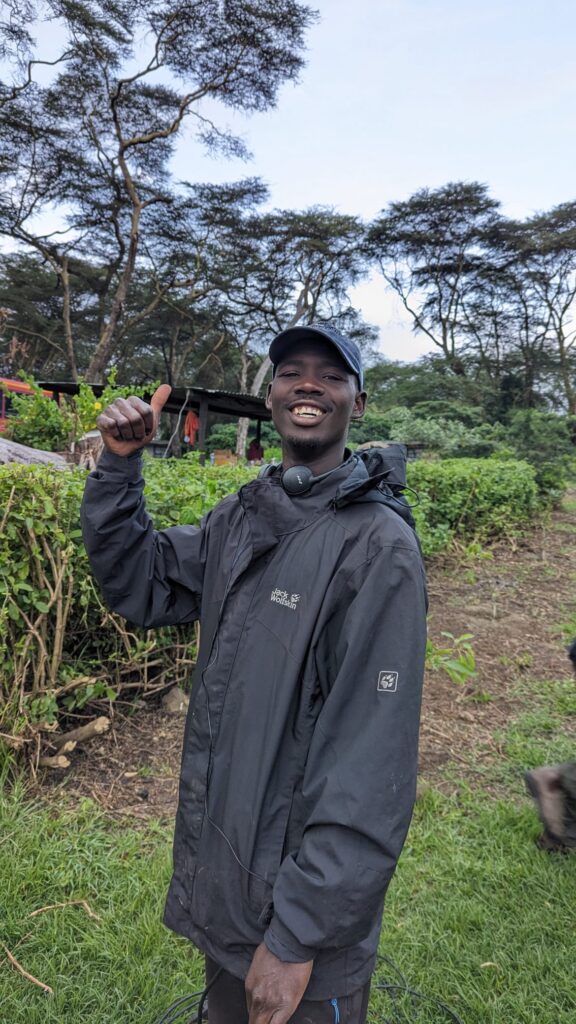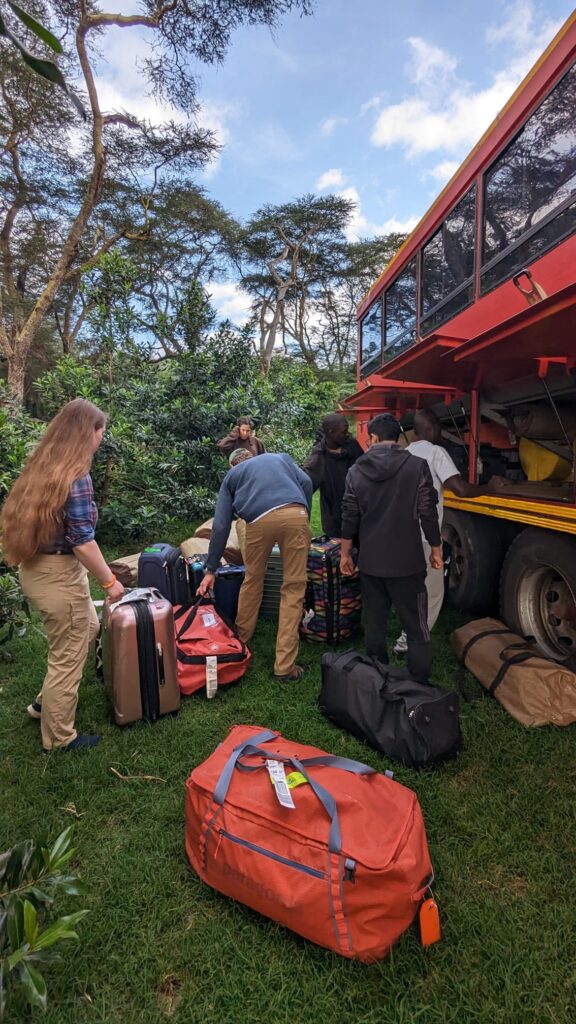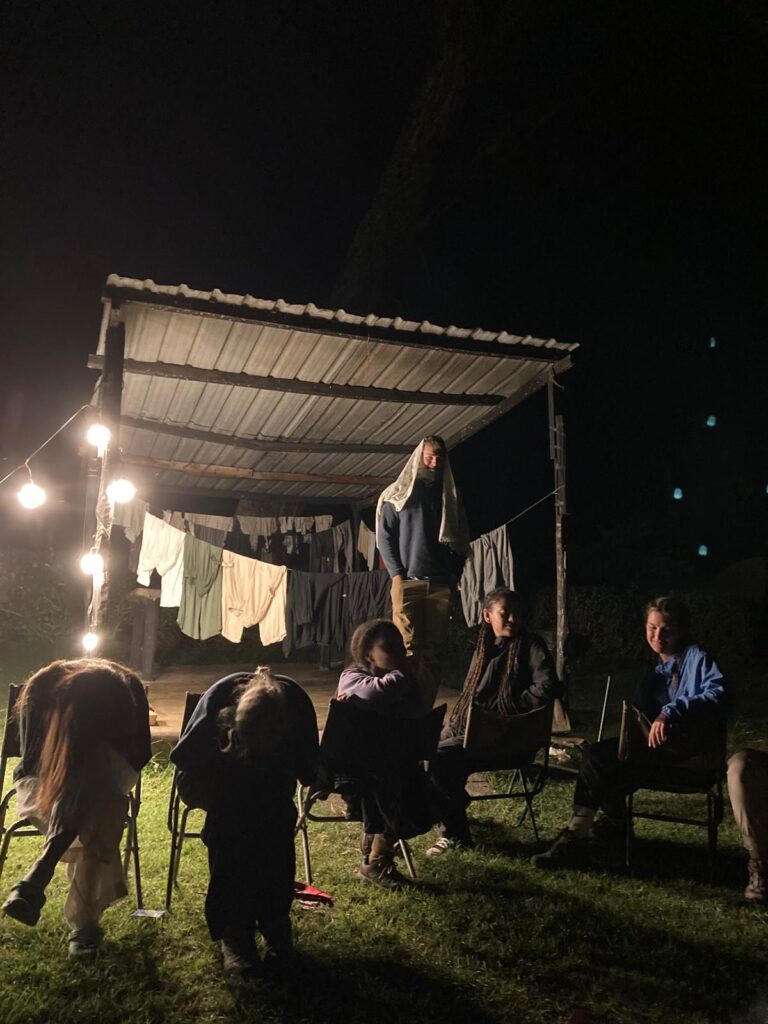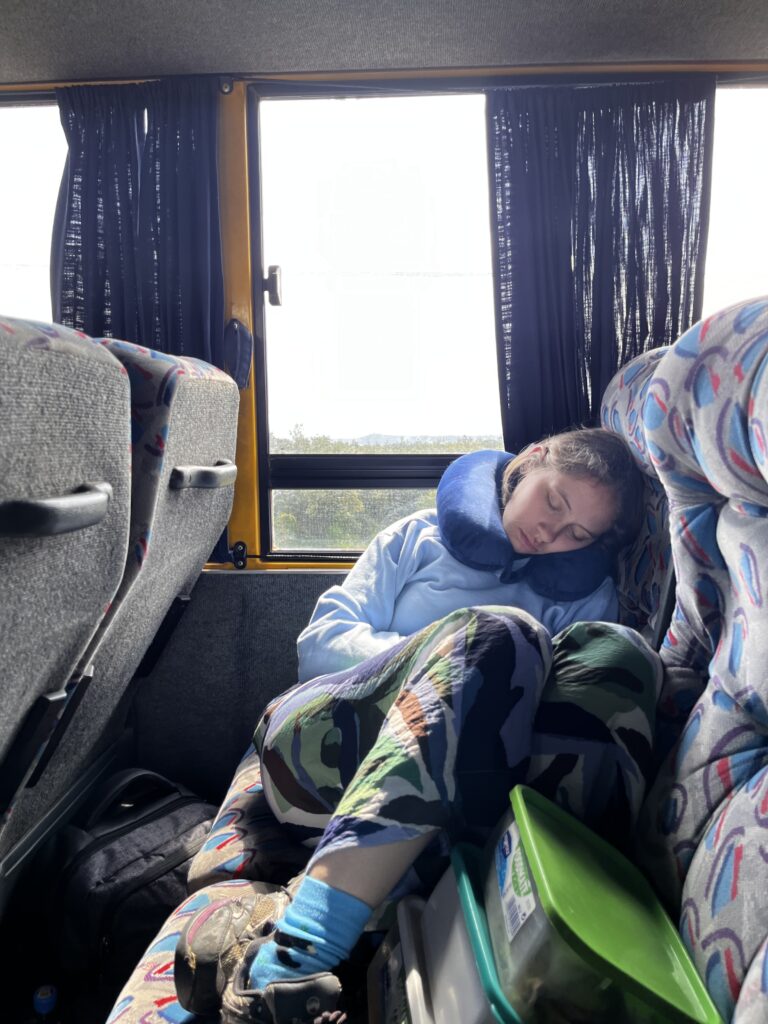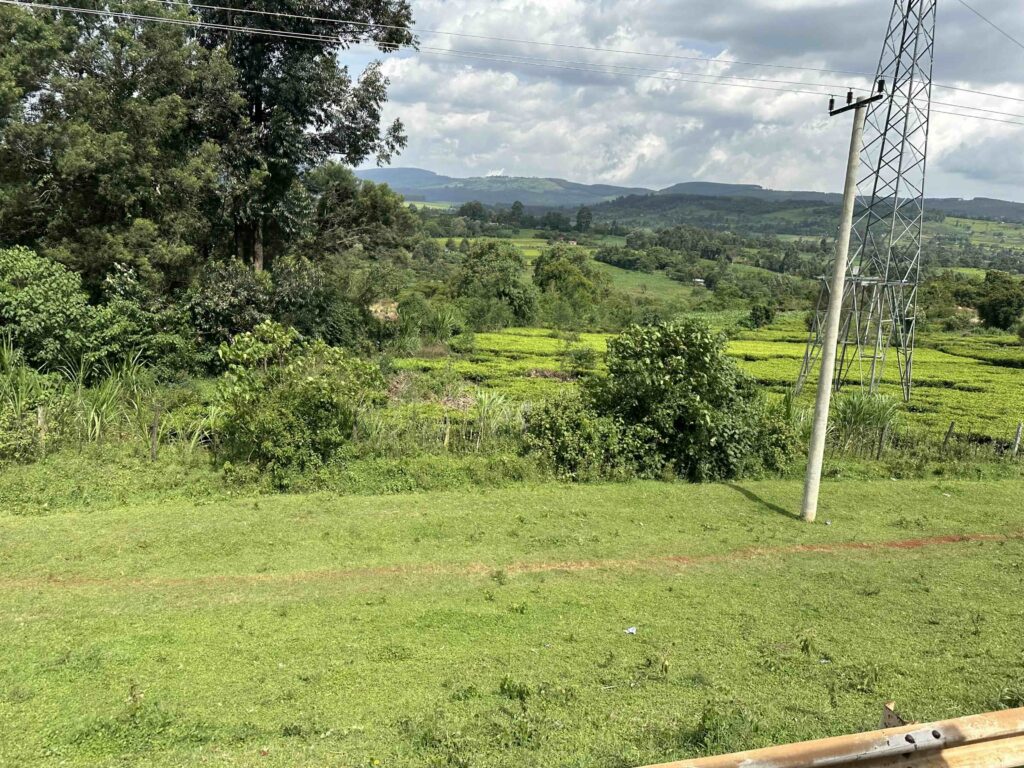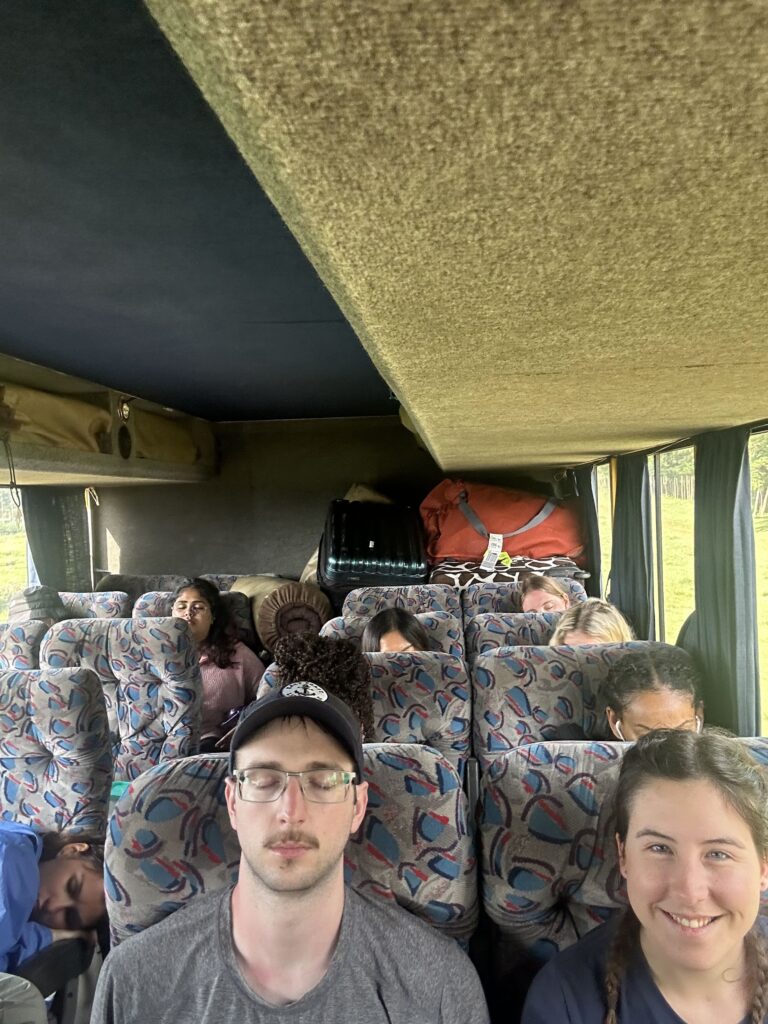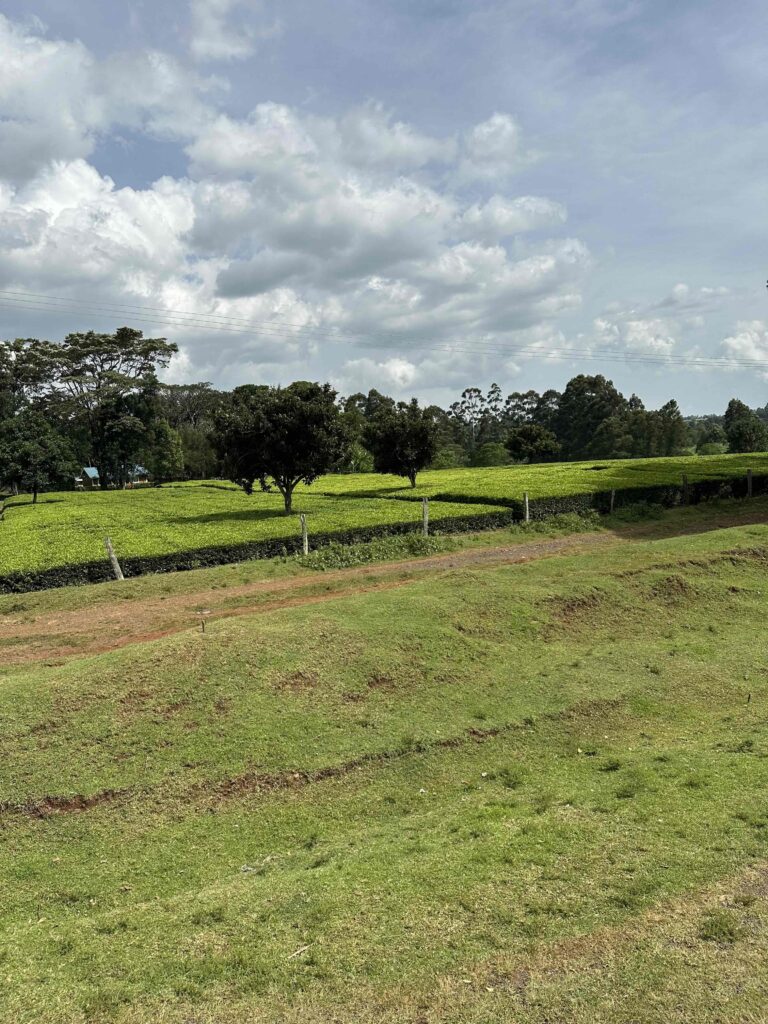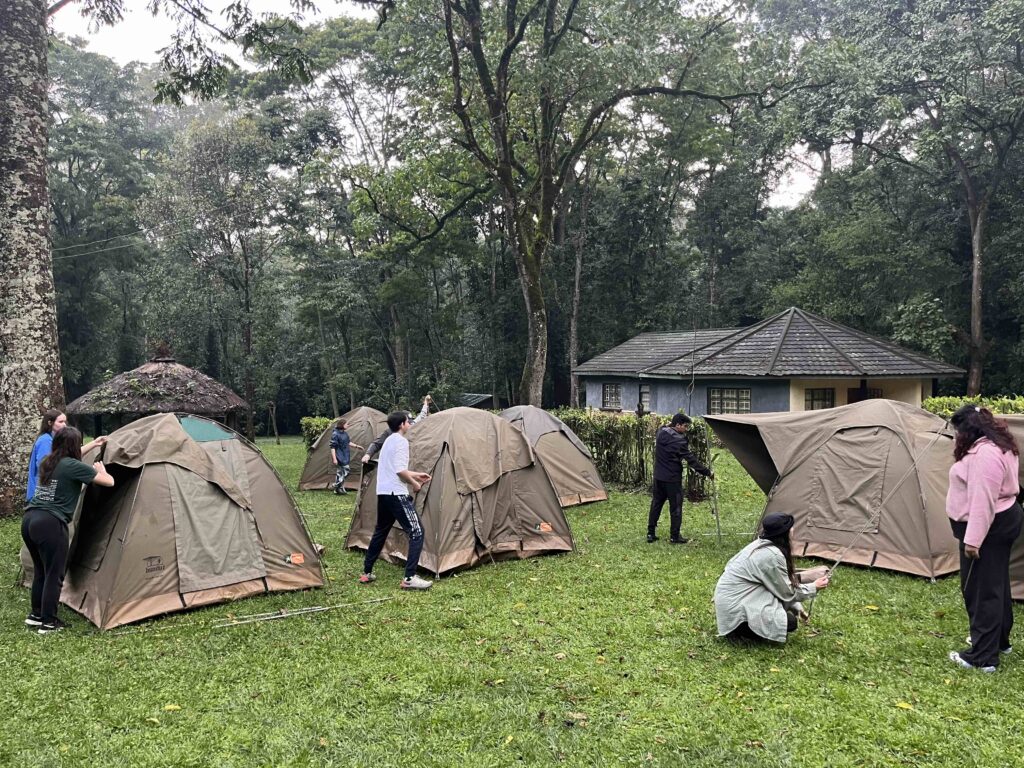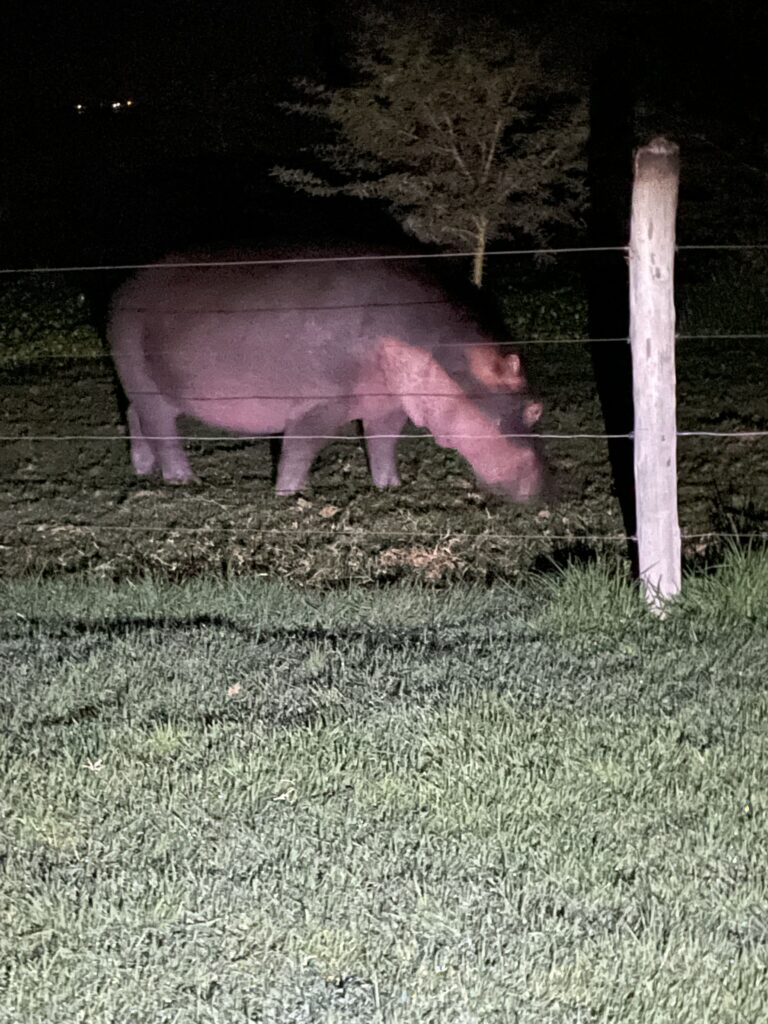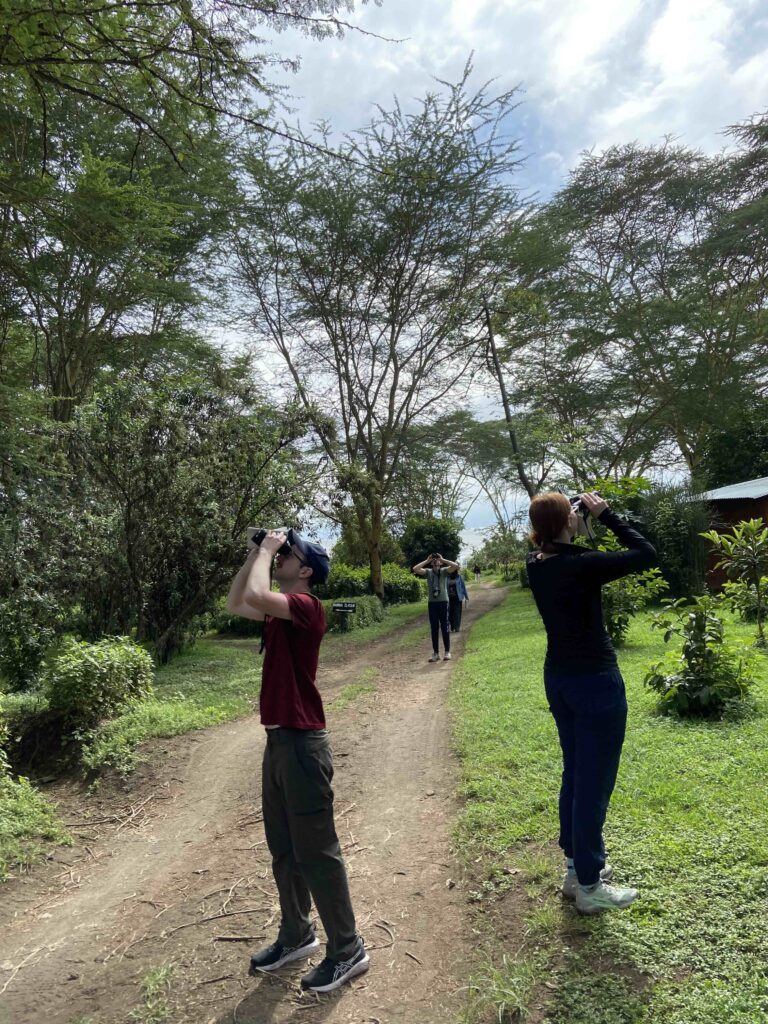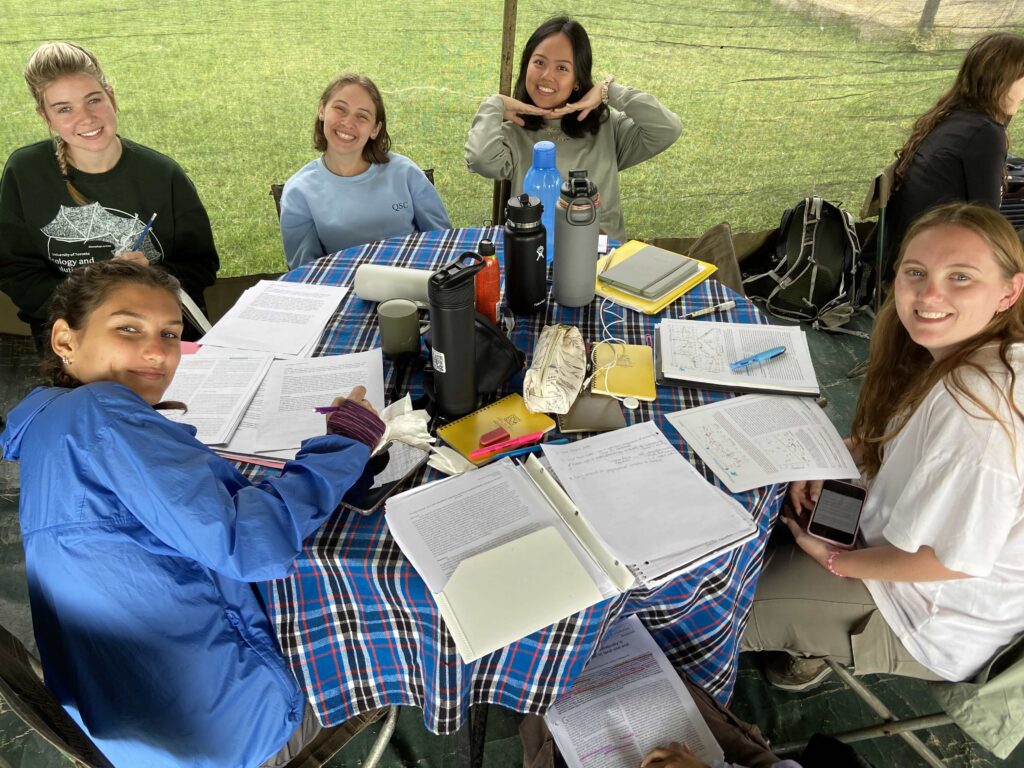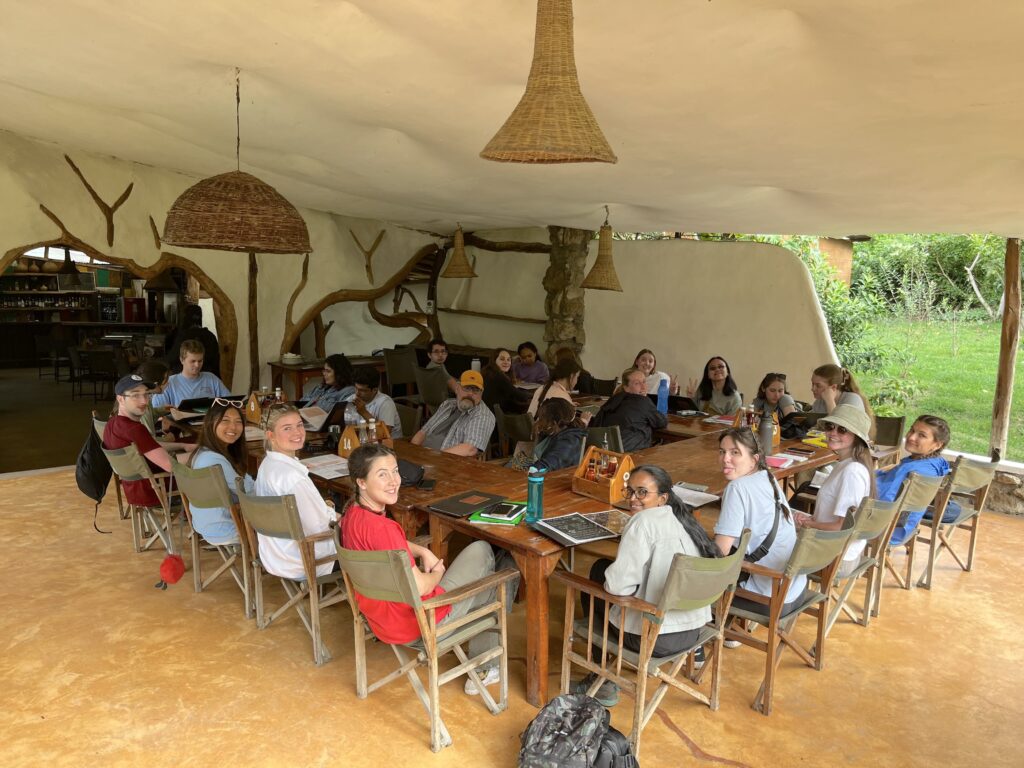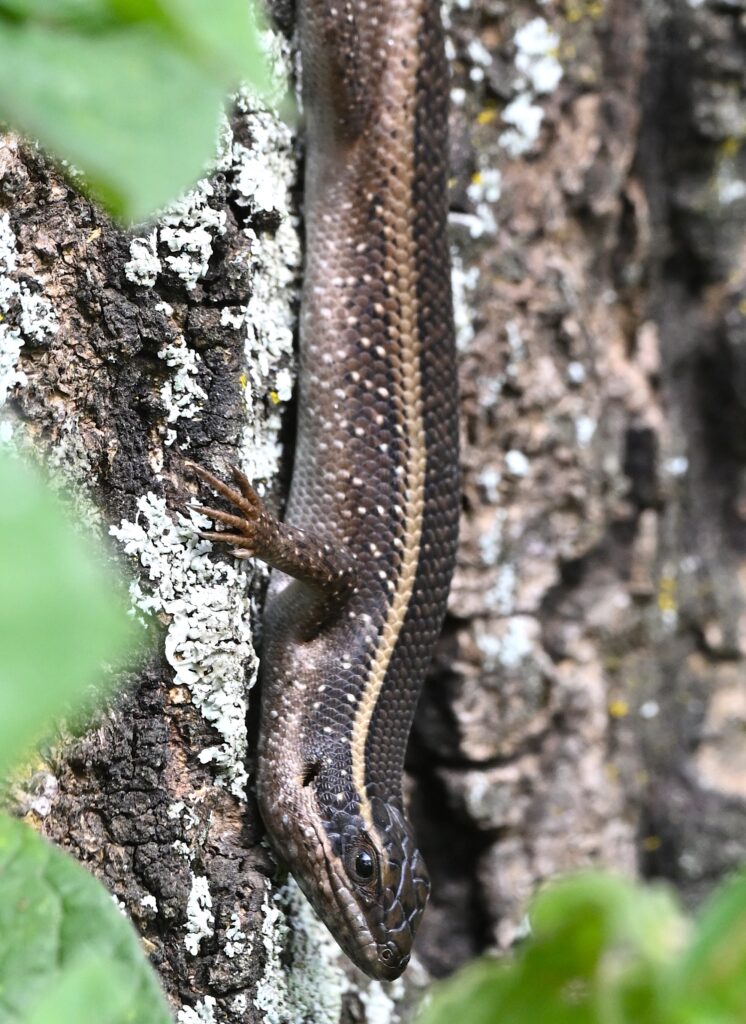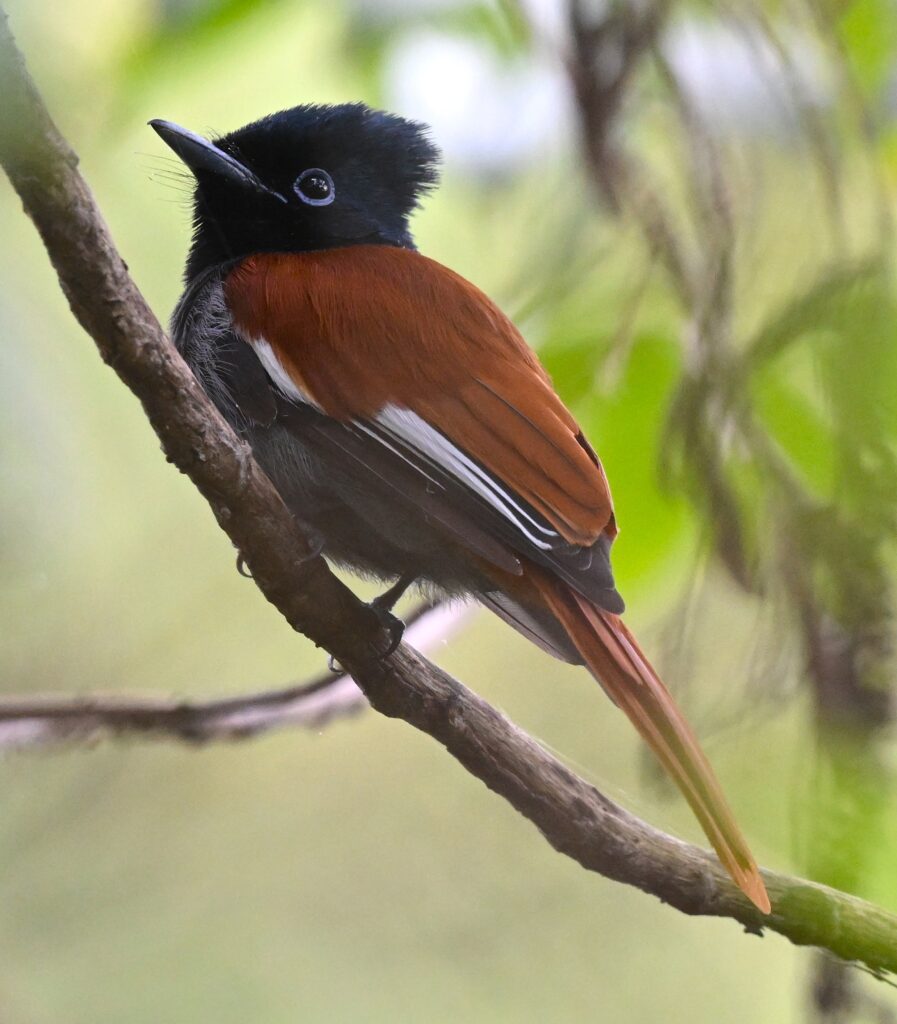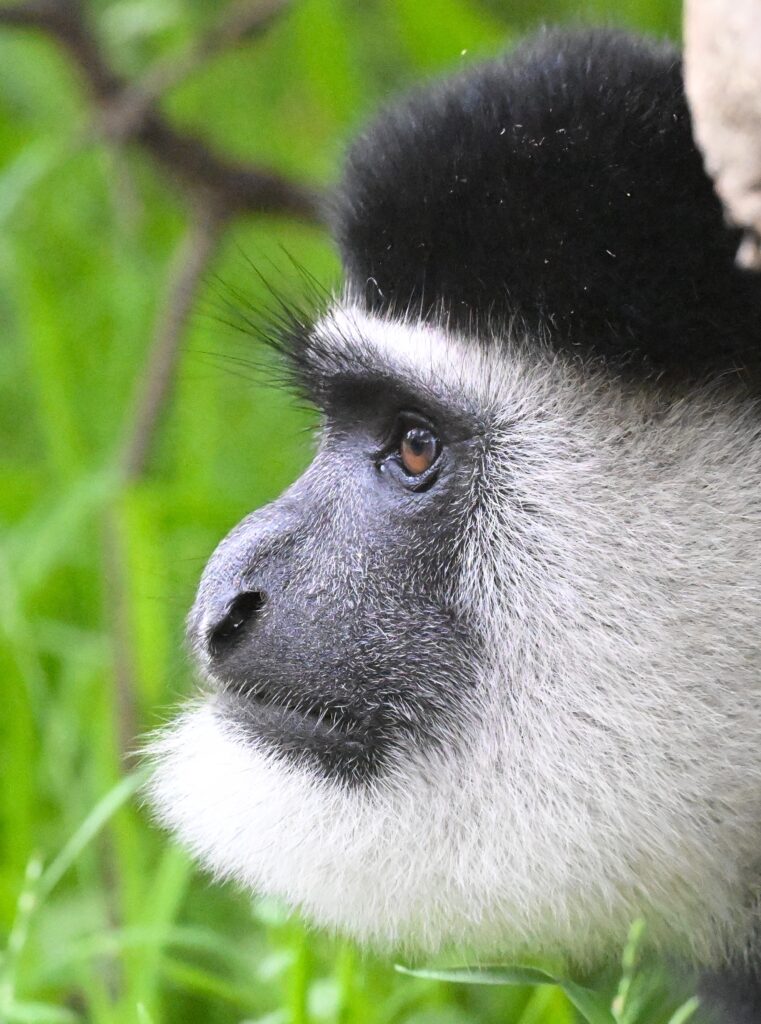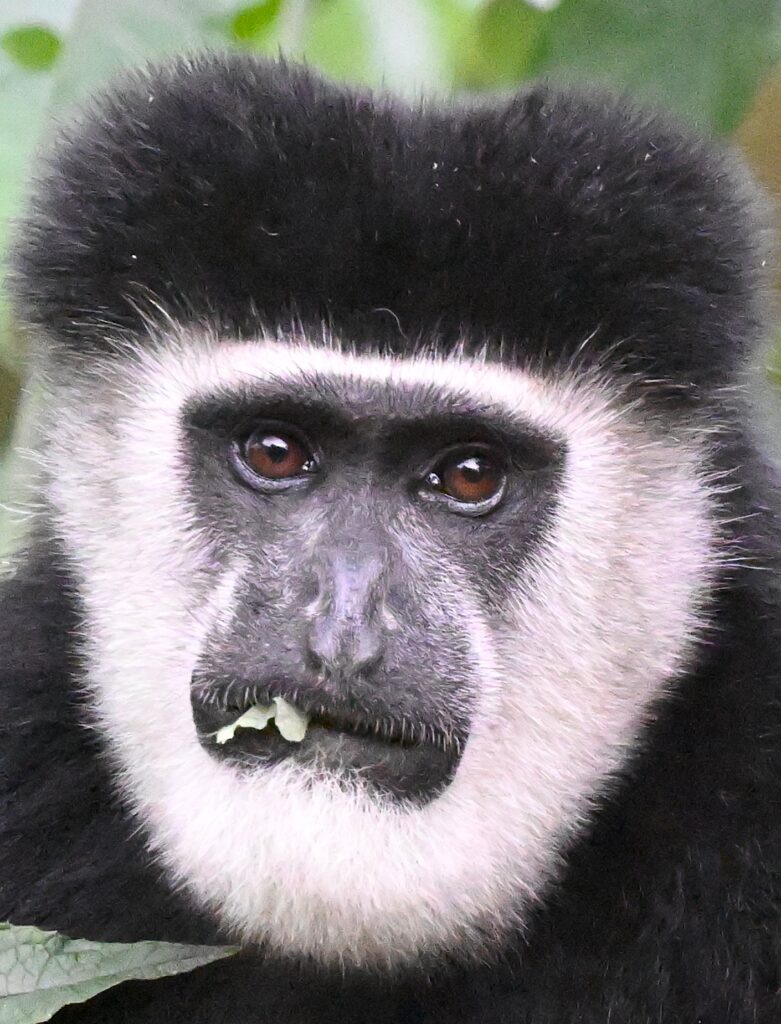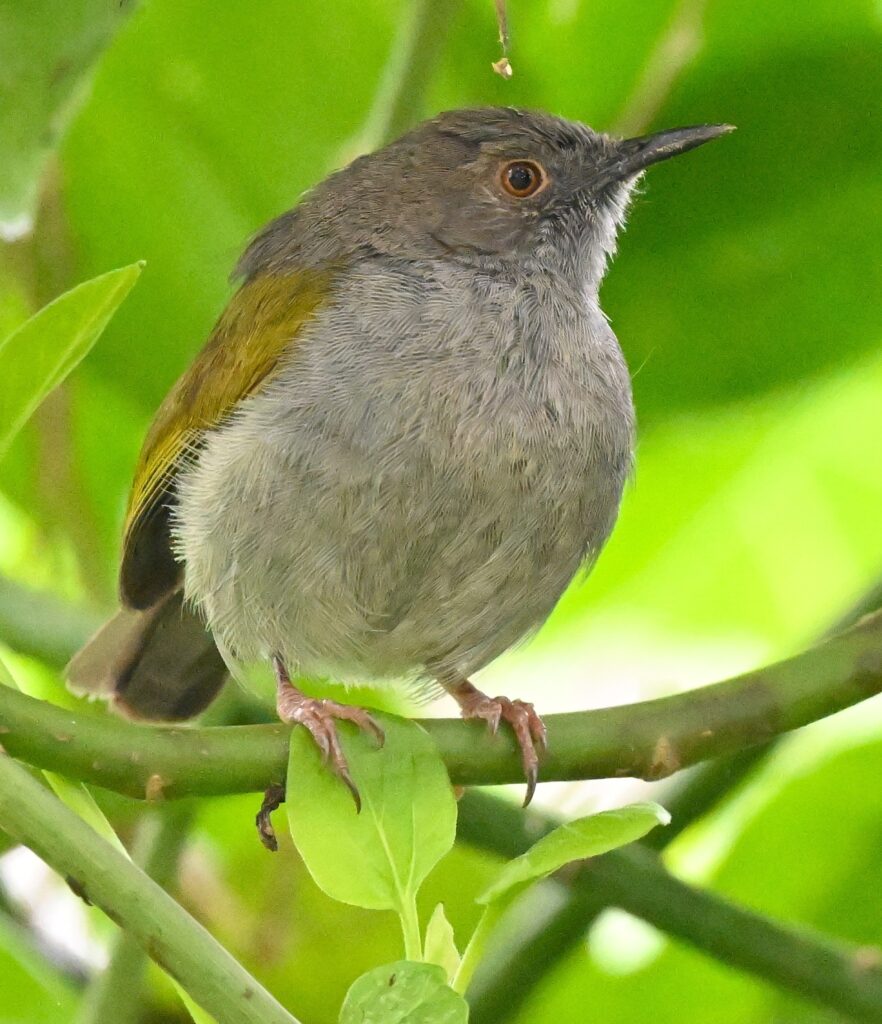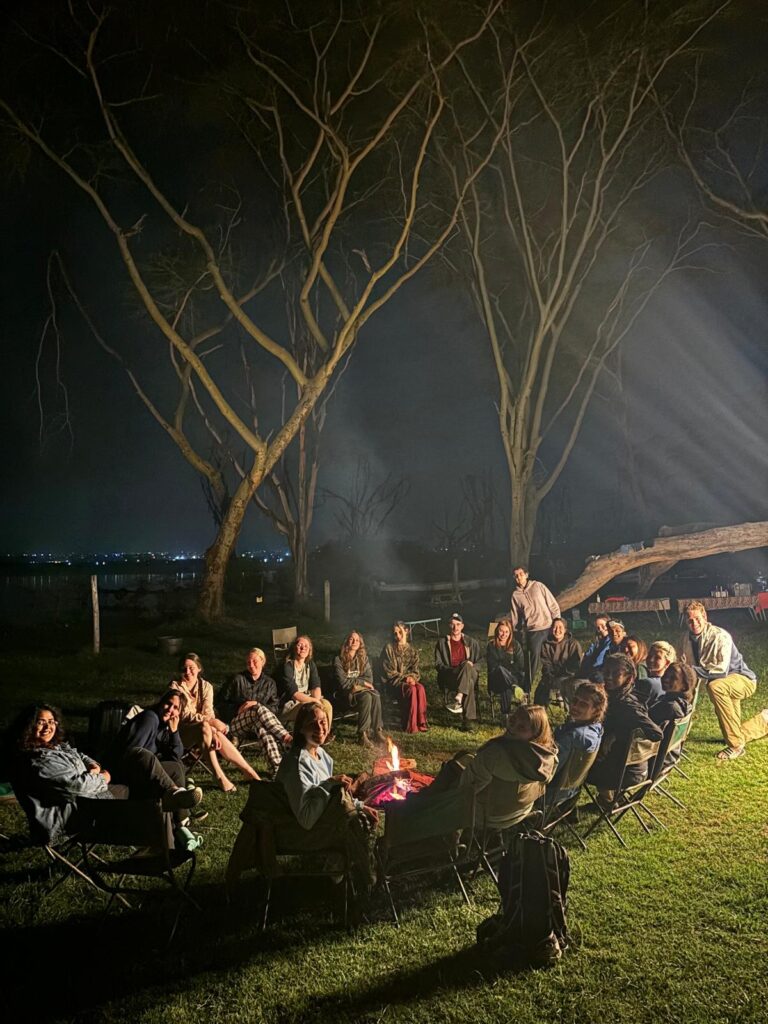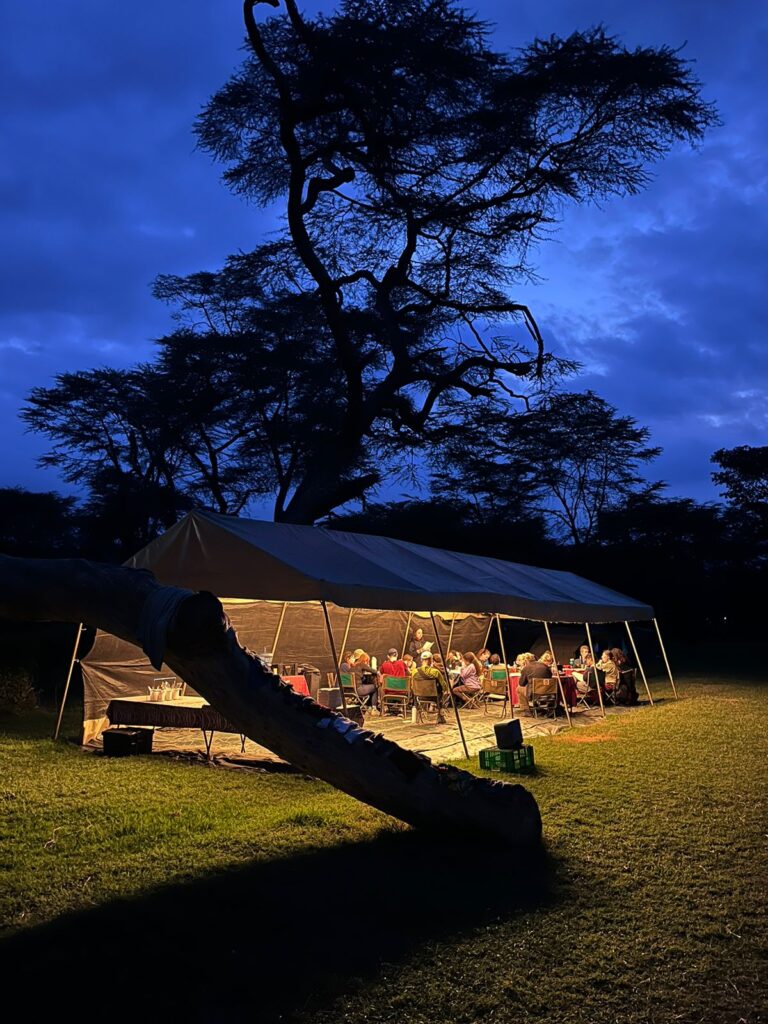Victoria, Alise & Brianna
The long journey home!
On the morning of the 18th, we made our way to breakfast when we were greeted pleasantly by Hannah a lovely vendor selling beautiful souvenirs. Hannah had an array of merchandise such as t-shirts, keychains, bracelets, shoes, bowls, and much more! Notably there was an eye-catching collection of postcards that Hannah detailed were handcrafted by an 87 year old artist in town. With a warm smile, and excellent pricing we all eagerly acquired final gifts for friends and family (and admittedly ourselves!).
We had a relaxing day at the Kolping Conference Centre while waiting for our red eye flight to Amsterdam. We had a final briefing on the guidelines and expectations for the final critical review, and got the chance to talk to Dr. Lougheed and Dr. Wang about our final papers which many of us found relieving! We also spent some last moments together signing each other’s field books & sharing some of our favourite memories.
Harrison absolutely outdid himself for our last Bunduz meal in Kenya with fried tilapia, potato wedges, and guacamole for lunch chef’s kiss. The meals provided on this trip were incredible, and we are so thankful to the Bunduz crew for always preparing enough for seconds, thirds … And fourths!!
Right before leaving for the airport, we said our thanks to Carol, Dr. Lougheed, Dr. Wang, and Dilini by giving them thank you cards. This was an incredible experience that would not have been possible without them!
We then made our way to the airport soaking up our last views of the city Nairobi and then said our sad goodbyes to our wonderful Bunduz staff.
We had some time to kill at the Nairobi airport which was spent eating, buying coffee as well as other souvenirs, and sleeping! Our first flight went smoothly, landing us safely in beautiful Amsterdam. With a two hour layover, some of us took the opportunity to peruse the stores, and take pictures with a giant clog. Our second flight went by quickly, and soon we were saying our final farewells, emotions were high with multiple group hugs.
We’d like to send a huge thank you to Dr. Lougheed, Dr. Wang, Carol, and Dilini for crafting an unforgettable experience and sharing valuable knowledge in the form of lectures and activities across the ecologically diverse locations of Kenya. We are deeply grateful to have been guided by such passionate individuals who encouraged us to explore complex conservational and socioeconomic topics.
We’d like to thank Mukhtar, John, John, Lucas, Kevin, Harrison and the entire Bunduz staff for joining us on this journey. You provided safe transport, exquisite food, meticulous planning, Swahili lessons, and most importantly friendship. Your support and companionship made this trip truly special.
We are so grateful to have had participated in a field course that had been created and delivered with such passion and care. This journey not only expanded our understanding of conservation, ecology and the socio-economic landscape of Kenya; but also enriched our lives with unforgettable memories and lifelong friendships.
This experience has profoundly impacted us, and we look forward to applying the knowledge and insights we’ve gained to our future endeavors. Thank you once again to everyone who made this trip possible and extraordinary.
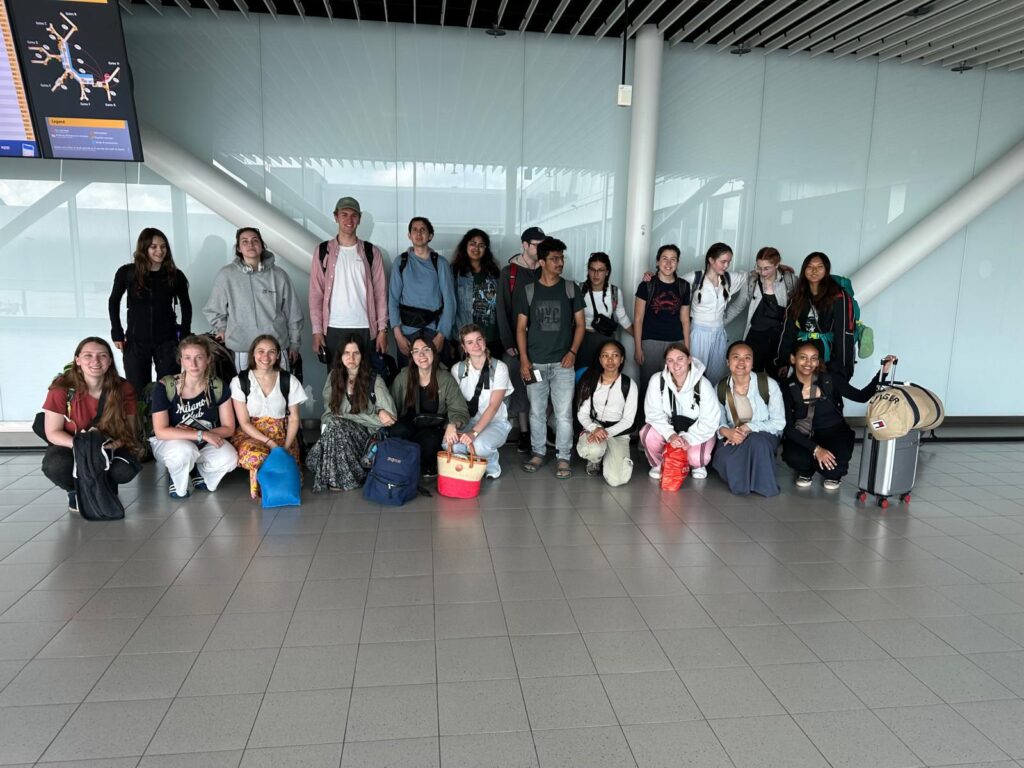
Class photo in Schipol Airport before Katie departed
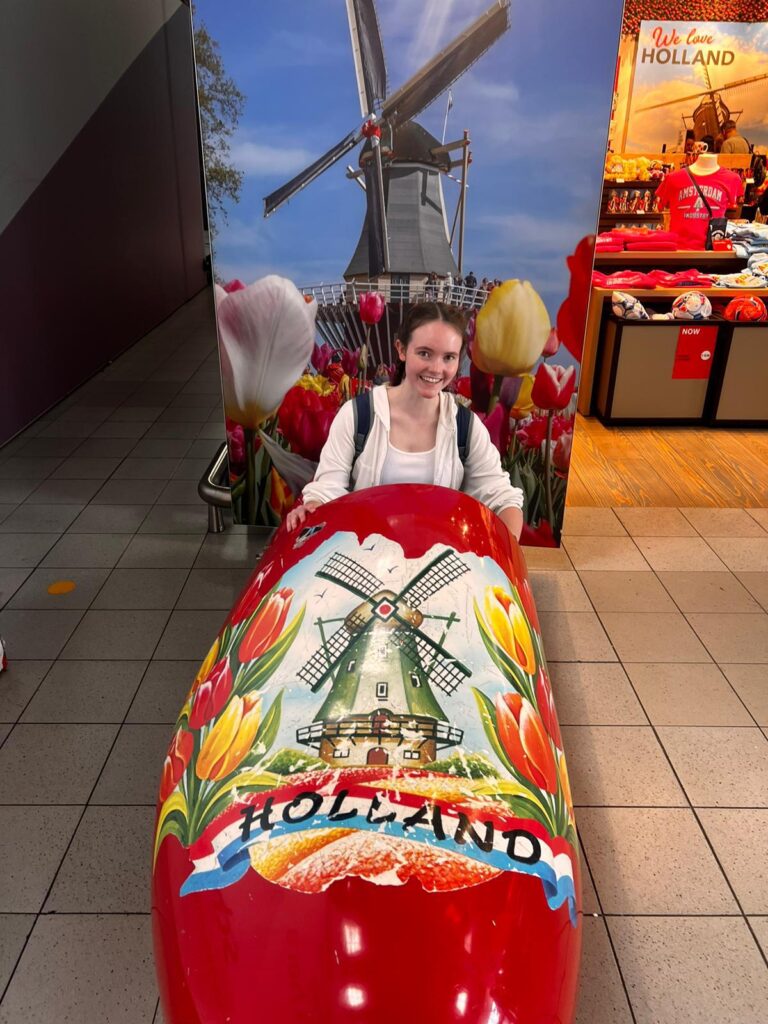
Clog shenanigans in the Amsterdam airport
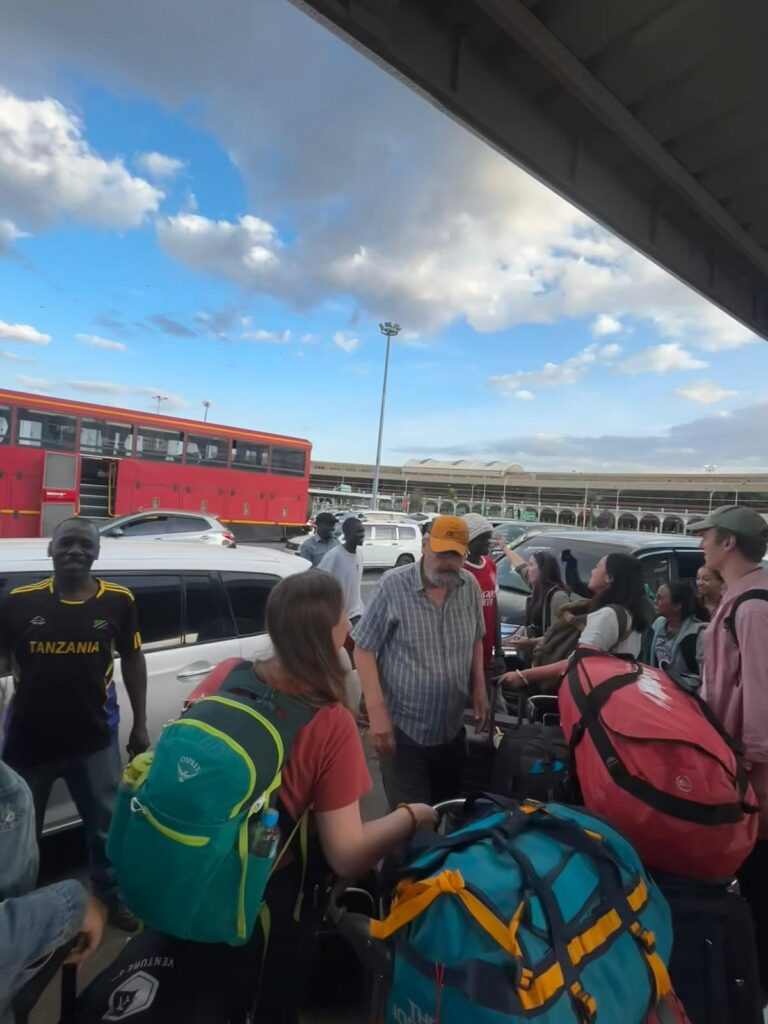
Jomo Kenyatta Airport before the myriad security checkpoints
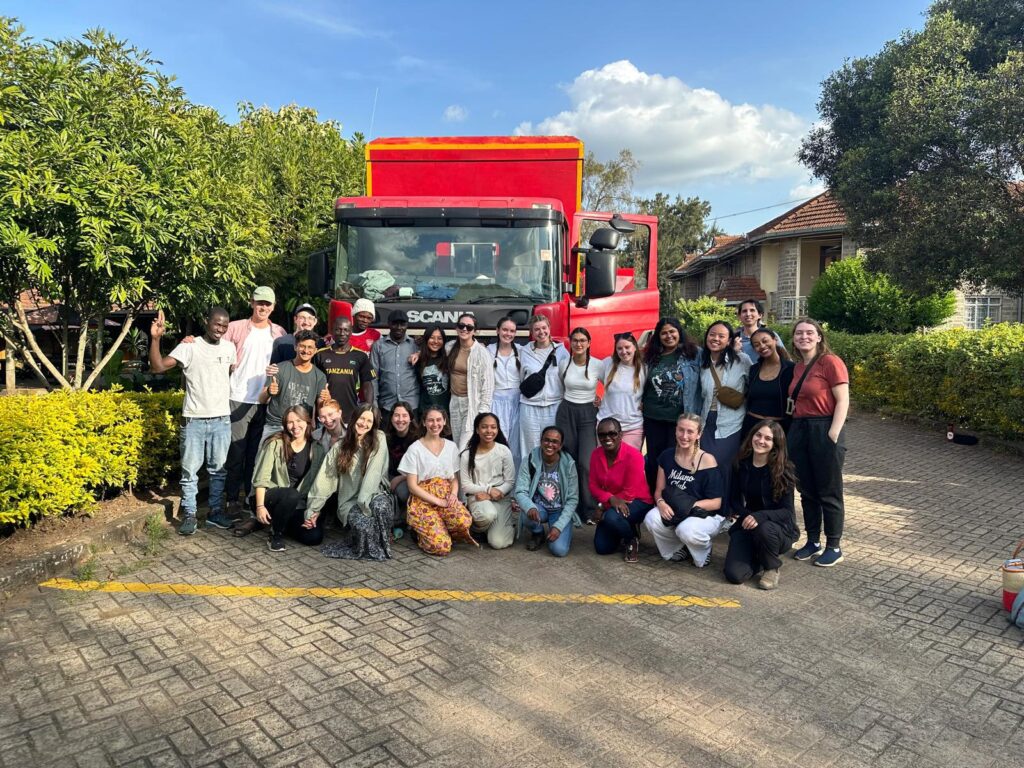
Our final farewell to the Bunduz crew
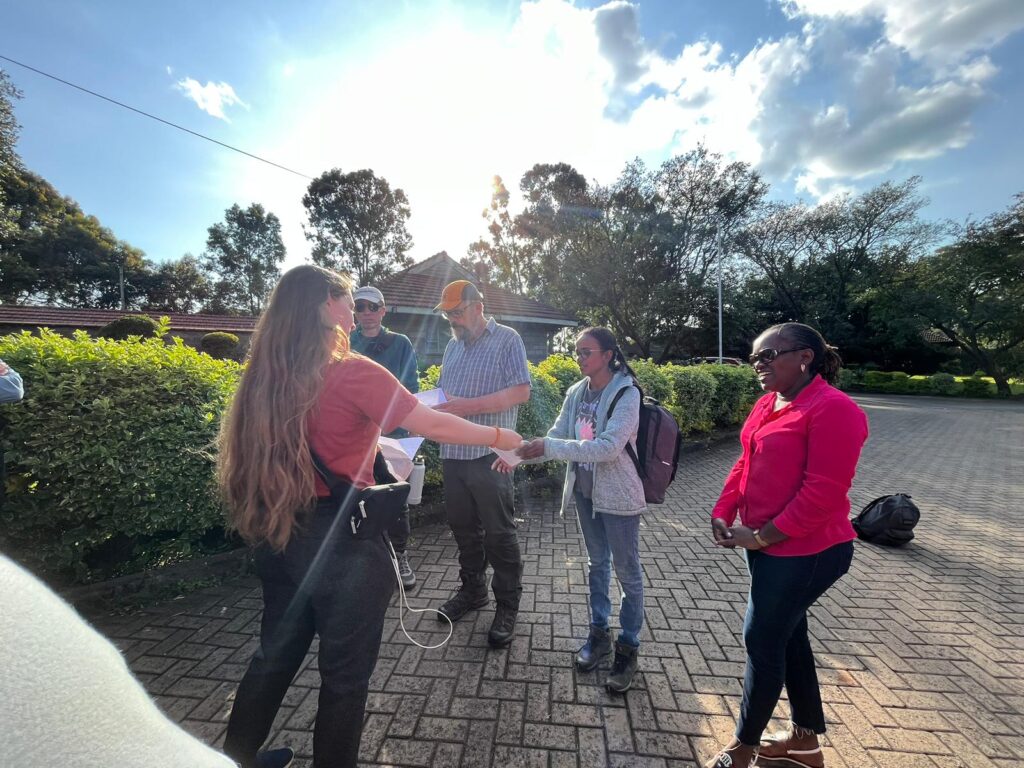
Sarah presenting written messages from the class for Dr. Wang, Dr. Lougheed, Dilini, and Carol
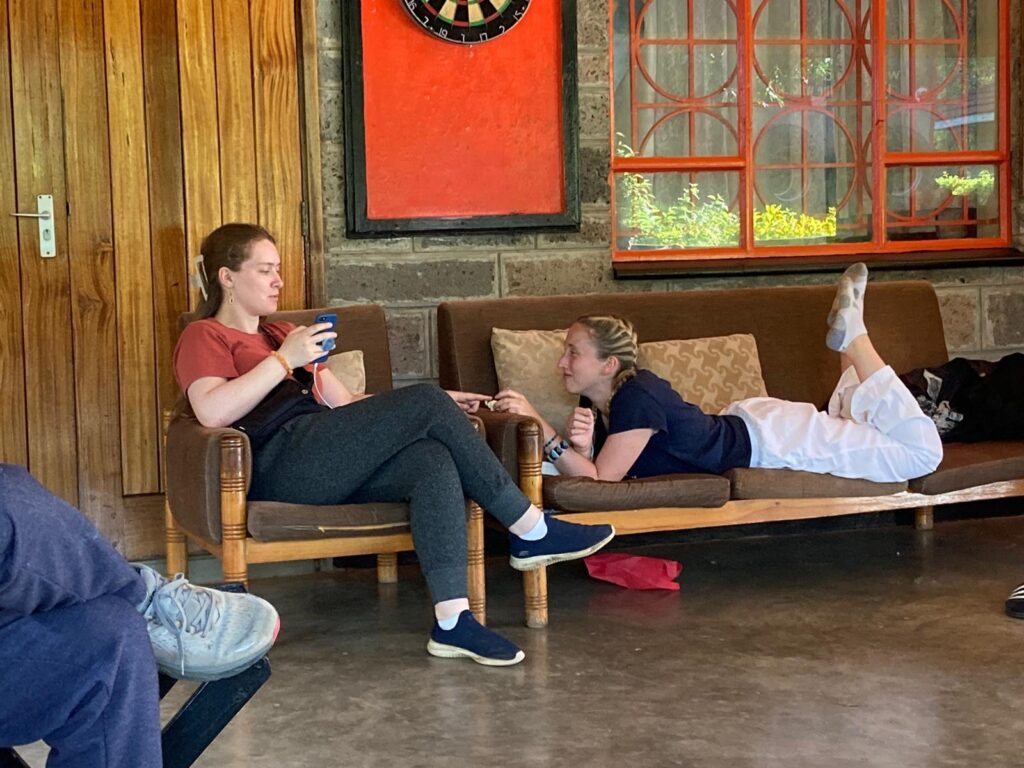
Our last moments at the Kopling Conference centre hanging out and signing journals
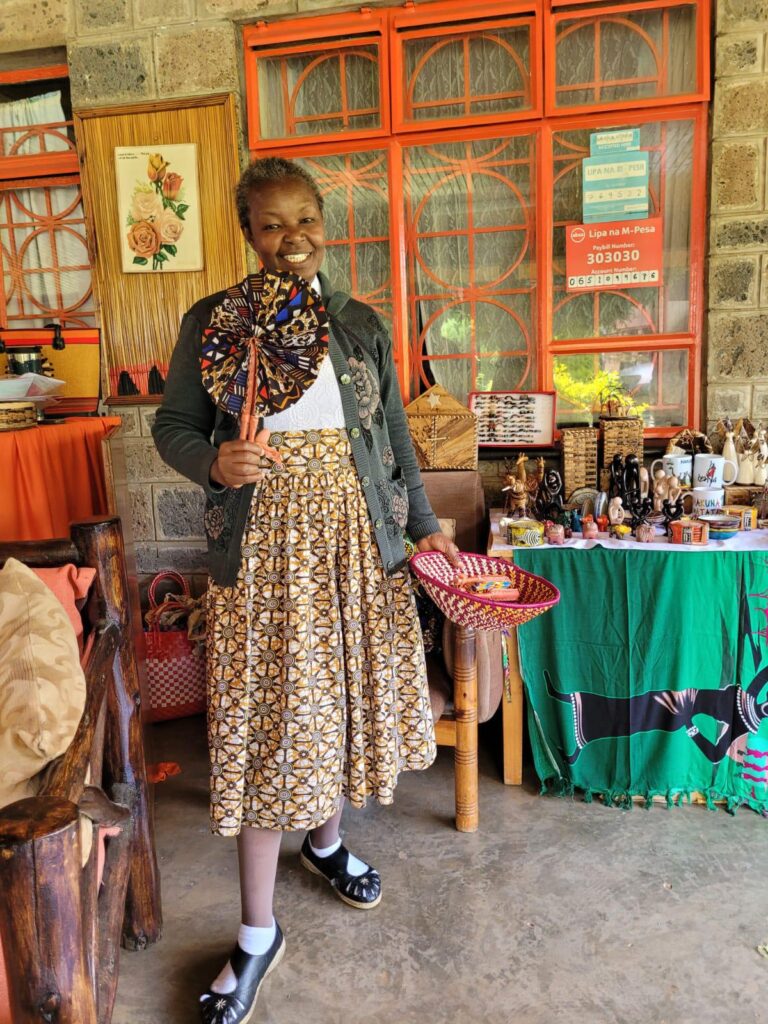
Hannah
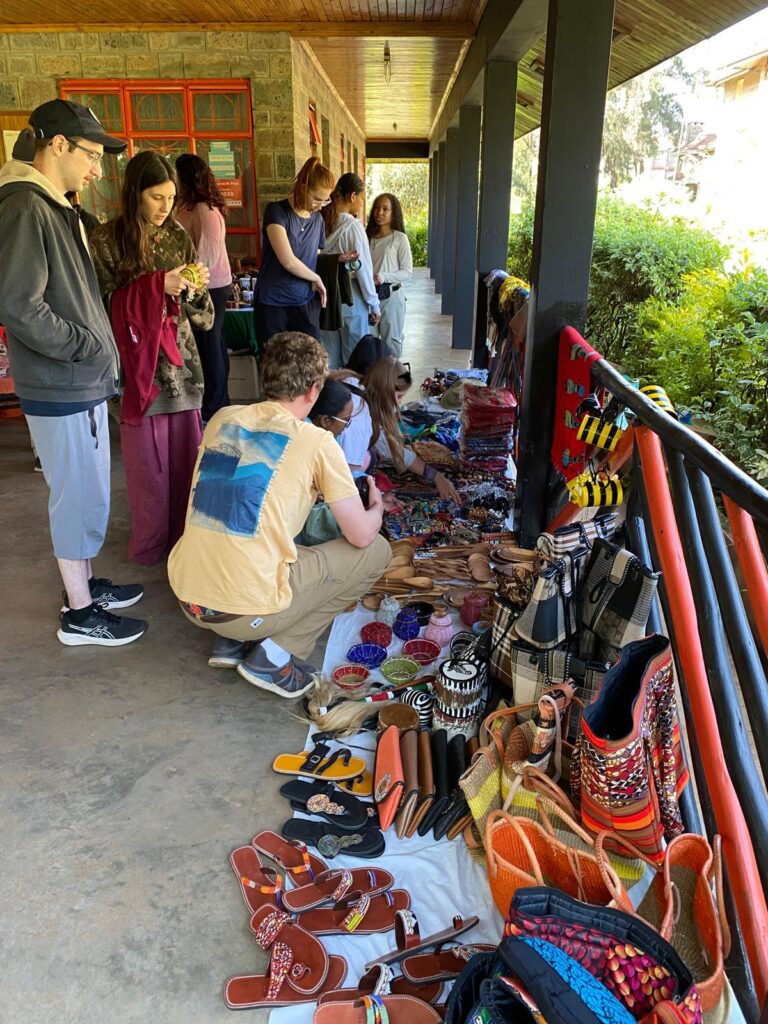
‘We have all the souvenirs we need’ they said. ‘We are all shopped out’ was heard. ‘I have few shillings left’ was the refrain …

